Exhibition: Finding Inspiration in Our Special Collections |
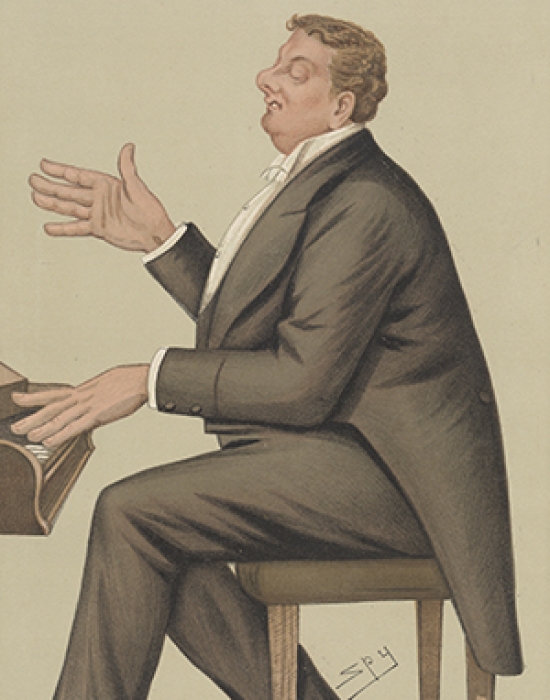
In the past year, three playwrights have conducted research in the Department of Rare Books, Special Collections, and Preservation (RBSCP), including Mat Smart for his recent hit, The Agitators. Playwrights often seek out the archives to gain a better understanding of the past, and scholars of design, photography, graphic art, and gender studies can also learn a great deal from exploring the history and culture of theater. The items in this exhibit are taken from our extensive collection of theater materials, which includes a significant collection of twentieth-century British plays, thousands of playbills, photographs, drawings, letters, and posters, as well as a world-class collection relating to the work of Gilbert and Sullivan. The exhibition was on view in the Friedlander Lobby.
Exhibition: Over Here, Over There
Student-Soldiers at the University, 1850-1980 |
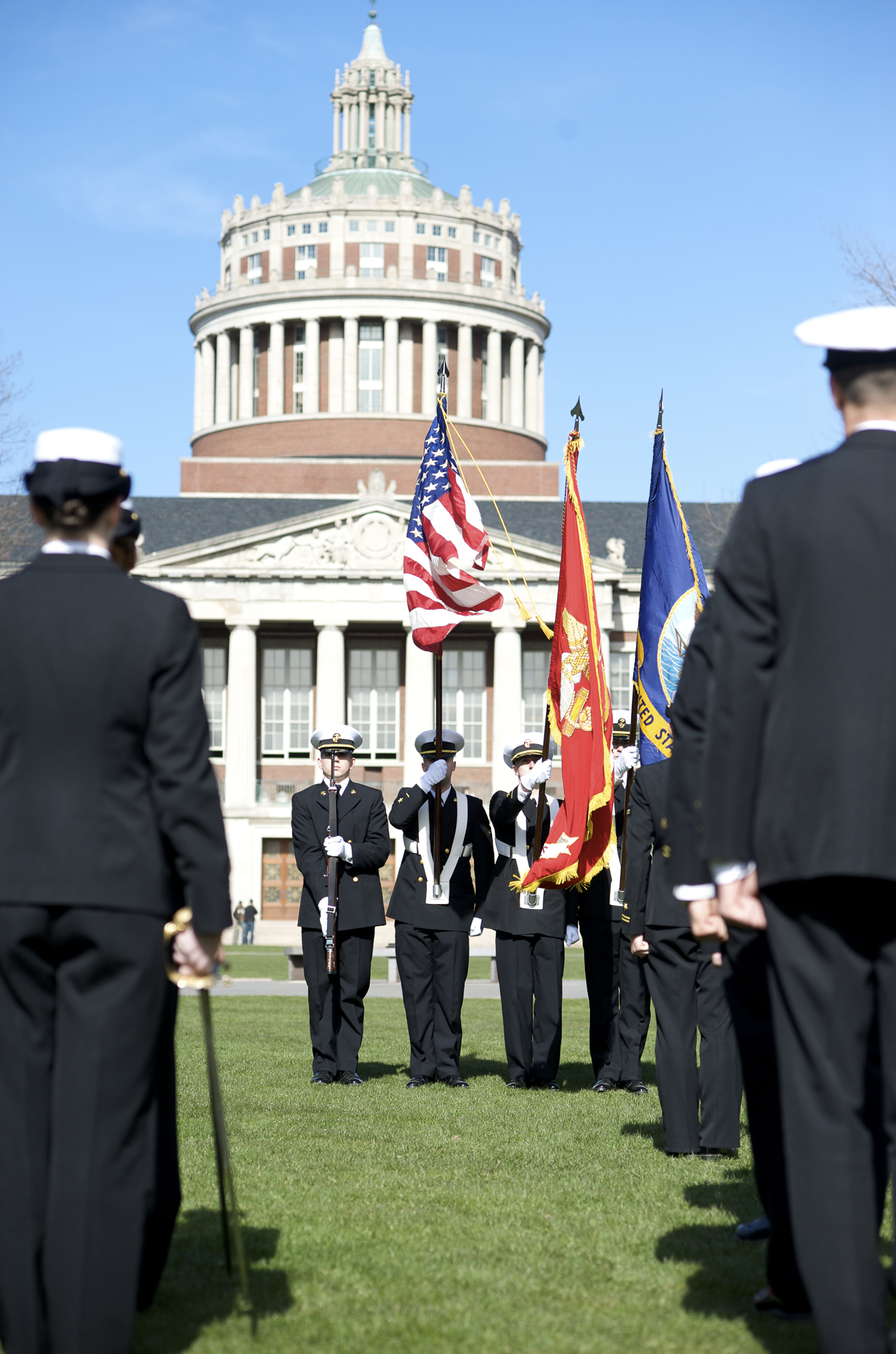
2018 marks the centennial of the end of the first World War. Almost 900 University students, alumni, alumnae, faculty, and staff participated, marching in the footsteps of those who served in the Civil War and Spanish-American War.
Later generations would follow, in times of war and as a chosen career– in World War II, Korea, Vietnam, Iraq, and Afghanistan. Some earned their degrees before their military service; others returned to join the faculty and staff, or to pick up their studies after discharge.
A third group combined education and military training: 2017 is also the 75th anniversary of the V-12 program to establish an accelerated training program for naval officers, followed soon after the war by the NROTC program which continues to this day and has just graduated its 70th class. The exhibition is on view through September 19, 2018 in the Great Hall on the 2nd floor of Rush Rhees Library |
Exhibition: From Clinton’s Big Ditch to Dewey's Thruway
200 Years Along the Erie Canal |

On July 4, 1817, ground was broken for a 363-mile canal to carry people and products from the Hudson River at Albany to the western frontier in Buffalo. Using the diaries of early travelers, ledgers documenting ships and cargo, engineering schematics, maps, engravings, and photographs, this exhibition celebrates the early vision and modern expansions of the Eighth Wonder of the World. The exhibition was on view through July 6, 2017 through February 3, 2018 in the Department of Rare Books and Special Collections on the 2nd floor of Rush Rhees Library. |
Exhibition: I Studied Abroad at Rochester
International Students at the University of Rochester, 1850-1967 |

In 1955, our fifth president, Cornelis de Kiewiet, said, "A passion for humanity--and a knowledge that humanity in us is indivisibly a part of all humanity--must rule our national and foreign policy." As an international student himself twice over--in South Africa and Great Britain--de Kiewiet would surely have included "academic policy" in that statement.
From our earliest days, the University has welcomed international students as a vibrant, necessary part of fulfilling our mission. This exhibition uses documents, photographs, and ephemera to explore the personal journeys of the wide range of these students who studied at the University of Rochester and who have left their mark both here and on the world. The exhibition was on view through January 15, 2018 in the Great Hall on the 2nd floor of Rush Rhees Library. | |
Exhibition: A Walk in the Garden: Special Collections' Blossoms |
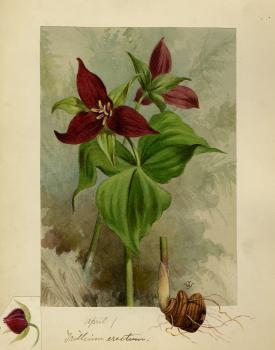
Blooms and blossoms come in many shapes and sizes, and the Department of Rare Books, Special Collections, and Preservation is a fertile ground for exploring the wonders of nature and the beauty of flowers and gardens that weave their way through our vast and diverse holdings. A Walk in the Garden: Special Collections’ Blossoms assembles floral images from our various collections and puts them side by side the first time. Come enjoy a beautiful vision of springtime and feel the warmth and sense the fragrance of countless blooms spanning centuries. The exhibition was on view through June 30, 2017 in Rare Books and Special Collections Department on the 2nd floor of Rush Rhees Library. (Image: John Walton, ca. 1880-1900)
Exhibition: To the Dandelion Yellow! |

In 1861, the University of Rochester moved to a new campus. It had just one building, some houses for faculty, and ample open land – land full of dandelions.
The students began a tradition of wearing them in their lapels. In the 1890s, dandelion yellow was chosen as the official school color. Songs were written with dandelion motifs. The student newspaper reported on the athletic teams, calling them "The Dandelion Yellows." As new campus buildings were designed, the flower was used as an architectural flourish. This exhibition pulls images and objects from the University’s Archives and features eighteenth century botanical engravings from the department's print collection to explore the deep roots of our favorite flower. The exhibition was on view through June 30, 2017 in Rare Books and Special Collections Department on the 2nd floor of Rush Rhees Library. |
Exhibition: Still Here: A New Take on Old Spirits |
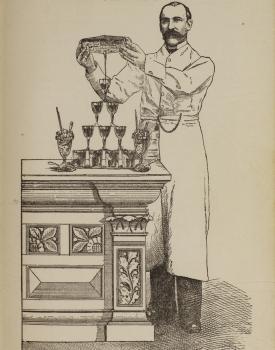
The notion of the “craft cocktail” is a relatively new concept, but the city of Rochester has a long and rich history relating to alcohol, alcohol production, and the culture that surrounds it. Curated by Amanda Chestnut, this exhibit explores a bit of that culture. Chestnut, who worked as a graduate intern in the Department of Rare Books, Special Collections, and Preservation used this exhibit to learn about and expose her viewers to local history through a topic that remains interesting and relevant. Chestnut holds an MFA in Visual Studies from Visual Studies Workshop, through The College at Brockport, SUNY. She has been exhibited throughout New York and was an artist in residence at the Center for Photography at Woodstock in 2015, and at Genesee Center for the Arts & Education in 2016. The exhibition was on view through May 26, 2017 in the William Henry Seward Room in Rare Books and Special Collections Department.
Exhibition: WRUR: On the Air, Into the Ether |

Spearheaded by a single student in 1947, WRUR has grown into one of the University's oldest and largest student organizations. Where once low-power transmitters in Burton Hall and Cutler Union brought music, athletic events, lectures, and concerts to dormitory residents; now the internet allows students to engage listeners (and alumni) all over the world. Whether you sat behind the microphone or listened in, come "tune in" to the history of the "Voice of the University of Rochester" via rarely-seen documents, photographs, and clippings.
Exhibition: A Greater Campus for a Greater University |
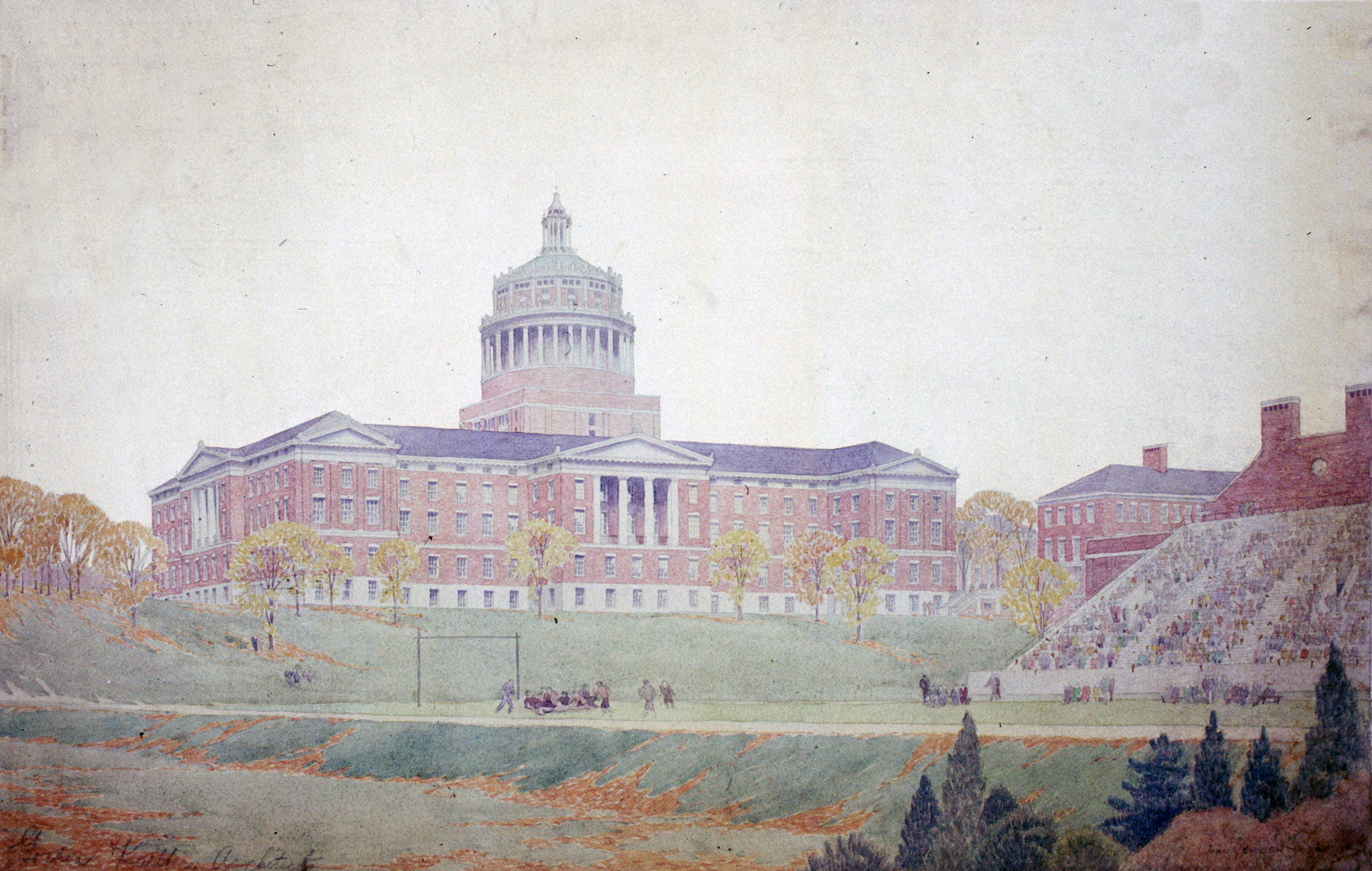
On May 21, 1927, a small crowd gathered for the ceremonial groundbreaking for the River Campus. Learn about their initial vision, and the ongoing restoration and revitalization of the original campus buildings through a display of archival photographs, blueprints, and planning materials, and discover how new academic programs and activities have transformed our landscape from twelve buildings to more than fifty.
Exhibition: City of Light: Rochester and the History of Optics
|
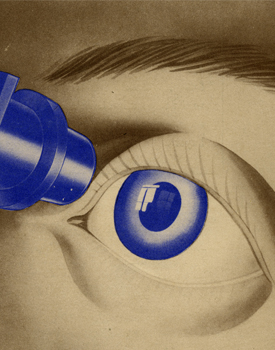
It is exciting to realize that the technology that allows us to look into the depths of far galaxies is the same technology used to enrich milk and remove unwanted tattoos. Optics, it turns out, affects almost every aspect of modern life. Rochester became a central hub for optical research and production starting in the late 1880s. The city's spirit of innovation led to the establishment of the Rochester Association for Advancement of Applied Optics in November 1915. Members of the Rochester Association later became instrumental in the founding of the Optical Society of America in February 1916 and the establishment of the Institute of Optics at the University of Rochester in 1929. In celebration of Rochester's important contribution to the field of optics and the Optical Society's centennial, this exhibition invites viewers to learn about the achievements and milestones of the optical professions from its beginning in the early twentieth century through its height during the post-World War II era.
Exhibition: Home, Politics, and Travel: The Seward Family’s Early Years
|
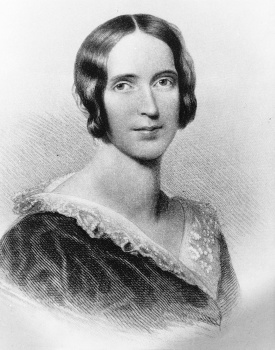
Before becoming nationally known as a U.S. Senator and Secretary of State, William Henry Seward started his career as a lawyer and state senator, later serving as the 12th Governor of New York from 1839-1842. After passing the bar in 1822, he moved to Auburn, New York to practice law under Judge Elijah Miller. He married Miller's daughter Frances in 1824. This exhibit showcases items from the Seward family's early years including William Henry and Frances's marriage, the experiences of their children growing up in a politically charged household, Seward's two terms as Governor of New York, and the life of Frances Seward - the politically-minded woman who shared her opinions with her husband while spending most of her time at home in Auburn. The exhibition is on view through August 26, 2016 in the Seward Room of Rare Books and Special Collections Department on the 2nd floor of Rush Rhees Library, Monday through Friday from 9 a.m. to 5 p.m. and 11 a.m. to 3 p.m. on Saturday. For more information please call (585) 275-4477.
Exhibition: The Transformative Lens: Ansel Adams’ University of Rochester |
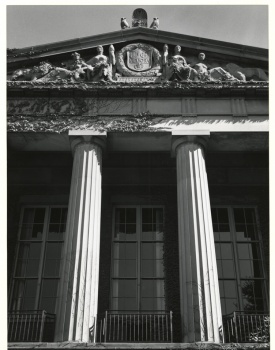
In 1952, Ansel Adams was hired by the University to create a photographic portfolio of faculty, students, the River Campus, and the city of Rochester. The resulting images were used in a capital campaign that would merge the then-separate colleges for men and women, and pave the way for the graduate schools of engineering, business, and education. Why Adams undertook the project, how he saw us, and how we have changed in the subsequent decades are the focus of an extensive display of Adams’ original photographs The exhibition was on view through November 20, 2016 in the Hilfiker Gallery of the Department of Rare Books and Special Collections on the 2nd floor of Rush Rhees Library. For more information please call (585) 275-4477.
Exhibition: BOA Editions: 40 Years of Connecting Writers with Readers
|
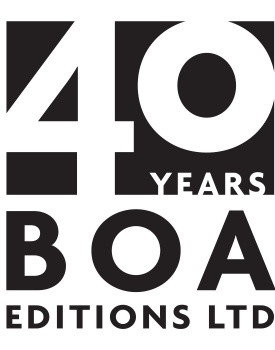 In celebration of BOA Editions' 40th anniversary, this retrospective exhibit explores BOA's evolution over the years through an extensive display of BOA volumes published between 1977 and 2015. Selected typescripts, book and cover designs, correspondence between authors and editors, and BOA publicity samples-all drawn from the archives of BOA Editions acquired by the River Campus Libraries beginning in 2005-reveal the lifecycle through which poetry and literature move from submission to published work. The exhibition is on view through July 29, 2016 in the Friedlander Lobby of Rush Rhees Library during library hours. For more information please call (585) 275-4477.
Exhibition: Noble Anderson! The Bicentennial of Our First President
|

For almost its entire history, the University has been under the watchful eye of its first president, Martin Brewer Anderson: first during his 35-year tenure, and then in the form of his towering statue on the Wilson Quadrangle. In life, Anderson was a true Renaissance man: he was an administrator, mentor, professor, civic leader, and devoted husband to his beloved wife, Elizabeth. Rarely seen letters, speeches, tributes, and photographs will explore the story of the titan who guarded the fledgling school through war and economic depressions, and guided it to a respected position among the nation's institutions of higher education. The exhibition is on view through May 31, 2016 in the Great Hall of Rush Rhees Library during library hours. For more information please call (585) 275-4477. |
EXHIBITION: "Glorious, vibrant & vital": Women in Claude Bragdon’s Life
|
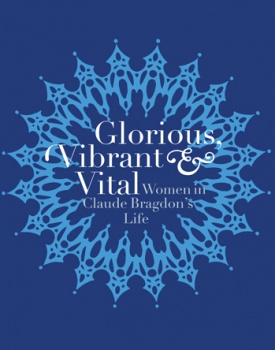
Claude Bragdon (1866-1946) was an extraordinary man whose circle of family and friends included many extraordinary women. Throughout his varied career as artist, architect, theatre designer and writer, Bragdon travelled in many different social and artistic spheres. His path into and through these worlds was lit by the women who nurtured him personally and professionally. This exhibition of artwork, books, manuscripts and photographs will celebrate some of these women and their influence. The exhibition is on view through August 6, 2016 in Rare Books and Special Collections Department on the 2nd floor of Rush Rhees Library, Monday through Friday from 9 a.m. to 5 p.m., and 11 a.m. to 3 p.m. on Saturday. For more information please call (585) 275-4477.
|
|
EXHIBITION: Science and Compassion: The Legacy of Dr. Louis Lasagna
|
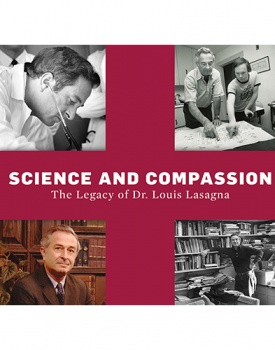
For writer, teacher, and pioneering researcher in pharmacology Dr. Louis Caesar Lasagna (1923-2003), the study and practice of medicine extended beyond the walls of laboratories and hospitals into public policy, media, social justice, education, and the arts. Culled from the former University of Rochester professor’s personal and professional papers, this exhibit offers a glimpse into the accomplished career of a humanist public intellectual working amidst sweeping changes in twentieth-century medicine and society. Curated by Abigail Glogower, PhD Candidate, Visual and Cultural Studies. The exhibition is on view through May 16, 2016 in the Q/i area of Rush Rhees Library during library hours. For more information please call (585) 275-4477. |
|
EXHIBITION: RECENT ACQUISITIONS, 2014-2015
|

In this exhibit you will find a special showing of books, maps, photographs, and more providing insight into how Rare Books and Special Collections is growing. With an eye to supporting both traditional and new avenues of research and teaching at the University, our most recent acquisitions strengthen our outstanding holdings in women’s history, social justice, and 20th-century literature, while also exploring new areas of collecting in the fields of photography and science fiction. All of the items on view, with few exceptions, were collected over the past year between 2014 and 2015. On view in the Rare Books and Special Collections Department on the 2nd floor of Rush Rhees Library, Monday through Friday from 9 a.m. to 5 p.m. and 11 a.m. to 3 p.m. on Saturday. For more information please call (585) 275-4477. |
|
EXHIBITION: The Ever-Better Entrepreneur
|
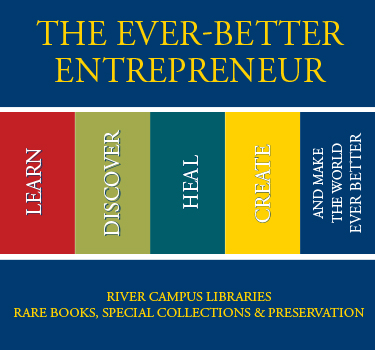
Last year, 250 patents were filed by inventors from all corners of the University, but our history of entrepreneurial faculty and alumni stretches back to our earliest years—from the 19th-century player piano (Merritt Gaily, UR 1863), to the Hib vaccine to prevent childhood meningitis (Dr. David H. Smith, '58M); from Professor Henry Ward and his scientific supply company, to the "Rochester cloak" developed in 2014 by physics professor John Howell and doctoral student Joseph Choi. This exhibition showcases some of our best (and least) known entrepreneurs, and how a desire to "learn, discover, heal, and create" led them to make the world ever better. This exhibition is on view through February 29, 2016 in the Department of Rare Books, Special Collections, and Preservation in Rush Rhees Library. For library hours and more information, click here or call (585) 275-4477. |
| Exhibition: Researching the Daguerreotype at the University of Rochester: Nanotechnology Meets Local History |
|

When the daguerreotype was invented in 1839, it immediately transformed human experience by providing the world a means to capture light and record people, places, and events. Today, the University of Rochester is leading ground-breaking engineered nanotechnology research that explains the mysterious and extraordinary qualities of this photographic process. This exhibit explores the history, process, impact, and University-related research efforts surrounding the daguerreotype, as well as our local connections to it. Looking closely at Rochester’s rich photographic history and our current technological resources, the exhibit asks, “Where do we go now?” hoping to bridge the already closing gap between the sciences and humanities. Available for viewing all hours the Library is open. Friedlander Lobby, Rush Rhees Library,1st Floor. | Exhibition: Open a Book, Open a Mind |

President Johnson said, “Books and ideas are the most effective weapons against intolerance and ignorance.” In honor of Banned Books Week (September 28-October 3, 2015), a selection of banned books—from Machiavelli’sThe Prince, to Maurice Sendak’s In the Night Kitchen—will be on display in the Q&i area of Rush Rhees Library. The exhibition will accompany a River Campus Libraries’ Read Out event on September 29 from 3-5 p.m. The exhibition was on view through Sunday, October 4, 2015. For library hours and more information, click here or call (585) 275-4477. |
| Exhibition: Around the World in Four Collections: Travel Journals, Letters, and Photographs, 1870 – 1940s |

Around the World in Four Collections: Travel Journals, Letters, and Photographs, 1870-1940s continues the spirit of Armand De Potter’s lifetime philosophy, “To Travel Is To Live.”
Presented are selections from the Sibley Family, Lewis Henry Morgan, Leo Hart Printing Co., and Joan V. Bondurant Papers, that give expression to a passion for travel as vital to a well-lived life.
The exhibit was on view through September 19, 2015 in the William Henry Seward Room.
|
| | Exhibition: Our Work Is But Begun |

In conjunction with the publication of Janice Bullard Pieterse’s newly-published book, Our Work Is But Begun: A History of the University of Rochester, 1850-2005, this exhibition is intended to provide an overview of some of the major (and a few minor) events in the University’s long history.
The book’s title comes from the 1854 inauguration speech of our first President, Martin Brewer Anderson: Our University is new. It is untrammelled by precedents. It holds itself ready to adopt every improvement which the activity of the future shall unfold. It has grown up from the spontaneous impulse of generous and intelligent founders. Their honored names inscribed in our archives represent every condition and calling. In the hearts of these men we have found the springs of our life. They have laid our foundations deep and strong. … But the breadth of its foundations, and the vigor which has hitherto marked the administration of its affairs, impose the necessity of a continued expansion and growth in the future. Not to become strong and able with such a beginning is to fail. Our work is but begun.
Available for viewing all hours the Library is open. Friedlander Lobby, Rush Rhees Library, through May 31, 2015.
|
| Exhibition: All the School's a Stage: Student Theater at the University |

“All the School’s a Stage” documents and celebrates the history of theater at the University of Rochester.
The University’s earliest forms of student theater were variety shows and ad hoc productions staged by informal groups or organized by class year. As the University entered the early 20th century, students became increasingly involved in extracurricular theatre groups like Kaleidoscope, Quilting Club, and Co-Kast. In 1990, a formal program in which students earned academic credit—known today as the International Theatre Program—was added to the theatrical activity on campus. It is hoped that the materials on display will spark fond memories for viewers who were active in theater at the University or who remember classmates and colleagues devoted to it.
This exhibition is also a part of the International Theatre Program’s twenty-fifth anniversary celebration. In an ever-increasing virtual age, the tradition of live theater on campus remains strong and continues to be an important facet of this University. The research and writing for this exhibit were the work of its student curator David Bates (UR 2014, Take 5); special thanks are due to Russell A. Peck and Nigel Maister for their advice and historical insights.
The exhibit was on view in the Great Hall, Rush Rhees Library, 2nd Floor, through August 31, 2015.
|
 | Exhibition: "To Travel Is To Live": Joanna Scott's DePotter's Grand Tour |

In collaboration with Joanna Scott, the Roswell Smith Burrows Professor of English at the University of Rochester, the Department of Rare Books, Special Collections, and Preservation created an exhibition that interweaves passages from Scott's new novel, DePotter's Grand Tour, with a selection of items that served as the novel’s inspiration.
The novel originates from Scott's research and imaginative thinking around recently discovered family papers: a steamer trunk full of documents, diaries, photographs and artifacts stored in her mother’s basement. DePotter's Grand Tour focuses on Armand de Potter [Scott’s great-grandfather], an 1870s young Belgian immigrant of modest means and no specialized education, but with a large vision of himself as a world tour leader and collector of antiquities. While working as a French instructor at the Albany Academy for Girls, Armand draws into his vision student Amy Beckwith, the 19-year-old daughter of a prosperous farm family in Dutchess County. Their 1879 wedding trip to Europe becomes a test run for what would soon be the first “De Potter Old World Tour.” The novel moves back and forth in time from their first years together to the early 20th century, and alternates between the perspectives of Armand and Amy (Aimée) de Potter. The account of Armand’s sudden and shocking disappearance at sea after almost 25 years of marriage and of De Potter [World] Tours becomes a focal point of the narrative.
Enveloped in elements of mystery, the novel is an exploration of the development and interplay of the de Potters as real players in the business of 19th century tourism – all impelled by very human qualities of ambition, deception, love, and love of learning.
The exhibit has been extended through June 30, 2015, and can be viewed in the Rare Books and Special Collections Department on the 2nd floor of Rush Rhees Library, Monday through Friday from 9 a.m. to 5 p.m. and 11 a.m. to 3 p.m. on Saturday. For more information please call (585) 275-4477.
|
| Exhibition: From Chime to Carillon |
In conjunction with the 2015 Hopeman Memorial Carillon Summer Recital Series, this exhibit explores the evolution of the Hopeman Carillon, from a 17 bell chime to a 50 bell carillon. The free outdoor concerts will be held each Monday in July at 7 p.m. on the Eastman Quadrangle on the University of Rochester's River Campus. The concerts are open to the public. For more information, click here.
Doris Aman, carillon faculty at the Eastman Community Music School, explained how the instrument is played during a live interview on Fox Rochester on July 1. Watch a clip here.
Available for viewing all hours the Library is open. Rush Rhees Library, Q&i. July 1 - August 2, 2015
|
| Exhibition: The Glory of Old Monroe: Rochester in the Civil War |

News of the Confederate attack on Fort Sumter on April 12, 1861 released a wave of patriotic energy in Rochester. Almost overnight, American flags and banners sold out at local shops, businessmen pledged thousands of dollars to soldiers’ families, and restless crowds descended on City Hall to decry the rebellion. Just three weeks later, 30,000 Rochesterians gathered downtown as the city’s first recruits boarded southbound trains—without rifles or proper uniforms—embarking on what would become a long and arduous journey for the city.
Between 1861 and 1865, more than 10,000 soldiers from Rochester fought to preserve the Union. “Rochester boys” were instrumental to several major campaigns, including Gettysburg and Antietam, and endured the indignities of disease-ridden camps and dehumanizing prisons. Hundreds of miles removed from hostilities, Rochester became central to the Union war effort. Army-contracted factories and hospitals grew rapidly to meet demand, and civil society, including the city’s notable abolitionists, rallied to aid soldiers and their families. The city avoided certain struggles faced by other Northern communities, including draft riots and economic depression. Nevertheless, the war was a tragic pause in a century of rapid growth, marked by the deaths of 650 soldiers and the devastation of downtown by a historic flood.
"The Glory of Old Monroe: Rochester in the Civil War" commemorates the experiences of Rochester’s soldiers and citizens, from national heroes to unsung drummer boys, prisoners of war, and local activists. Letters, photos, and equipment illustrate everyday life in the army and navy, while publications and other cultural artifacts give a glimpse of life on the home front. The exhibition was curated by Eitan Freedenberg, a Ph.D. candidate in visual and cultural studies. Freedenberg is also an Andrew W. Mellon Digital Humanities Fellow.
The project was inspired by the groundbreaking research of Edward L. Ayers, Ph.D., the 2015 Distinguished Visiting Humanist. Ayers’ research considers the Civil War from the rarely told perspective of individual communities, rather than the familiar perspective of generals and politicians.
Funding for this exhibition was provided by the College of Arts, Sciences, and Engineering. The curator would like to thank the Rochester Historical Society and the Rochester Museum and Science Center for opening their collections to the University, and Bob Marcotte, author of Where They Fell: Rochester-Area Soldiers in the Civil War, who advised and contributed additional research.
The exhibition is on view from March 14 – April 19, 2015 throughout the Rush Rhees Library:
William Henry Seward Room
Q&i
Digital Humanities Center
For more information please call (585) 275-4477.
|
| Exhibition: From Adversary to Ally: William Henry Seward in Lincoln's Cabinet |

Once the frontrunner for the 1860 Republican presidential nomination, William Henry Seward experienced an unexpected loss to the then virtually unknown Abraham Lincoln. Although he never became president, Seward did become Secretary of State and one of Lincoln’s most trusted advisors.
This exhibition focuses on William Henry Seward’s career in Lincoln’s cabinet, as highlighted in Doris Kearns Goodwin’s award-winning book, Team of Rivals.
Additional items on display include materials belonging to Seward’s family members that illustrate their roles in some of the most pressing political issues of the time.
The exhibit is open through November 30, 2014, and can be viewed in the Rare Books and Special Collections Department on the 2nd floor of Rush Rhees Library, Monday through Friday from 9 a.m. to 5 p.m. and 11 a.m. to 3 p.m. on Saturday. For more information please call (585) 275-4477.
|
| | Exhibition: The Play’s The Thing |

The Play’s The Thing & Gilbert and Sullivan: One Hundred Years of Posters, Gift of Hal Kanthor.
This fall, with selections from a recent gift of Gilbert and Sullivan posters making their debut in The Hilfiker Gallery and in The William Henry Seward Room, we shine a spotlight in our main exhibit area on an overview of theatrical holdings from the River Campus Libraries Department of Rare Books, Special Collections, and Preservation.
In it you will find items from our scene-stealing collections: Claude Bragdon, John Gardner, Anthony Giardina, Arthur Pinero, and Clement Scott. But we also here share some perhaps lesser-known material – from versions of the Greek myth of Amphitryon and Alcmene to an unpublished Colloquy on Shakespeare written by Frederick W. Seward, son of William Henry Seward.
Our exhibit tells a myriad of stories about theatrical performance and performers of the nineteenth century British and American stage. Through a rich selection of printed and manuscript librettos and play texts, etchings and original set and costume designs, manuscript correspondence and printed playbills, we illustrate over four hundred years of theatre history, from Shakespeare’s era to Rochester’s own vaudeville years to a Lincoln Center Theatre production in summer 2014.
The exhibit is open through December 22, 2014, and can be viewed in the Rare Books and Special Collections Department on the 2nd floor of Rush Rhees Library, Monday through Friday from 9 a.m. to 5 p.m. and 11 a.m. to 3 p.m. on Saturday. For more information please call (585) 275-4477.
|
| | Exhibition: Suffrage and Abolition |

This temporary exhibition highlights recently acquired letters from Susan B. Anthony to Rachel Foster Avery; recent acquisitions of Frederick Douglass materials; and rare and special collections related to Anthony, Douglass, and their Rochester connections.
Adding items such items to our collections offers researchers the opportunity to pursue new avenues of scholarship. For instance, an autograph sentiment signed by Frederick Douglass and Elizabeth Cady Stanton conveys the turmoil in both the abolitionist and women’s rights movements after the Civil War, as the meaning of citizenship was being redefined.
Understanding both the public and private lives of historical figures is a critical part of understanding their contributions to history. Through letters exchanged between Susan B. Anthony and Rachel Foster Avery, scholars can read not only about Anthony’s immense influence on the women’s rights movement, but also about her personal life. In one letter, she writes about her excitement over getting a telephone installed in her home on Madison Street.
The exhibit is open through November 30, 2014, and can be viewed in the Rare Books and Special Collections Department on the 2nd floor of Rush Rhees Library, Monday through Friday from 9 a.m. to 5 p.m. and 11 a.m. to 3 p.m. on Saturday. For more information please call (585) 275-4477.
|
| | Exhibition: Bluff City Pawn: A Novel |

This exhibition features materials used by University of Rochester English professor Stephen Schottenfeld as he conducted research for his new novel, Bluff City Pawn.
An investigation of class, law, betrayal, and blood, the book follows a Memphis pawn dealer and the interworking of his city, business, and family.
The exhibit is open through November 30, 2014, and can be viewed in the Rare Books and Special Collections Department on the 2nd floor of Rush Rhees Library, Monday through Friday from 9 a.m. to 5 p.m. and 11 a.m. to 3 p.m. on Saturday. For more information please call (585) 275-4477.
|
| | Exhibition: Veils of Salomé |

Throughout the past 2,000 years, the character of Salomé has evolved in popular culture from a minor biblical figure to a wrathful seductress to a tragic character. She inspired artists in the Middles Ages and the Renaissance, playwright Oscar Wilde, composer Richard Strauss, and even comic book artist Craig Russell.
As part of a symposium entitled “The Veils of Salomé” this exhibition of books from the Department of Rare Books, Special Collections, and Preservation will remain on view until October 25 at Q&i in Rush Rhees Library during library hours.
|
| EXHIBIT: Beyond Rochester’s ’64 Riots: 50 Years Seeking to Make One City Out of Two |

“Race Riots Rock Rochester: Curfew Imposed.” This Times of India headline of July 26, 1964 typifies hundreds throughout the world that announced startling news from a city known largely for its close-to-idyllic quality of life. The news stories reported that on a hot July evening, a small street dance party suddenly transformed into an angry mob scene of several thousand citizens countered by all available Rochester law enforcement.
At the end of the third day, when uneasy quiet was restored, the tally included: four people killed; heavy looting and property damage totaling more than one million dollars, with numerous commercial properties damaged beyond repair; and more than 1,000, both African Americans and whites, arrested. Rochester’s riots were classified as “most severe” and preceded many others through out the United States during the Sixties summers.
With the approaching fiftieth anniversary of Rochester’s riots, this exhibit acknowledges that it is well to remember and to continue learning from Rochester’s ’64 riots. Beyond Rochester’s ’64 Riots: 50 Years Seeking to Make One City Out of Two showcases a balance of highlights from the past, with the present-day, in search of a fresh perspective on ways to move our community forward.
Available for viewing all hours the Library is open. Friedlander Lobby, Rush Rhees Library, through October 5, 2014.
|
| EXHIBIT: "Bring Back These Colors with Honor: The University and the Civil War |

In May 1861, just a few weeks after the firing upon Fort Sumter which launched the Civil War, President Martin B. Anderson gave this exhortation to the first group undergraduates who enlisted in a regiment led by the Professor of Mathematics, Isaac Quinby. By war's end, one of every 12 undergraduates would enlist, along with at least 85 graduates and former students, serving on such battlefields as Cold Harbor, Bull Run, Chancellorsville, Wilderness, and Gettysburg.
Drawing upon letters, journals, photographs and scrapbooks in the University Archives, this exhibit recounts the honor the University's enlisted brought back, and the effect of the war upon those who remained on campus.
Available for viewing all hours the Library is open. Great Hall, Rush Rhees Library, 2nd Floor, through August 15, 2014.
|
| EXHIBIT: Acquiring Minds: Building Special Collections, 2009-2014 |
![L-R: YWCA of Rochester and Monroe County Collection. ca. 1910.; William Channing Gannett. The House Beautiful; in a setting designed by Frank Lloyd Wright. 1898.; John C. Gardner. “Julius Caesar and the Werewolf.” [1982]; American Tobacco Company. [University of Rochester] College Flag, Seal, Song and Yell. Tobacco silk, 1910.](http://www.lib.rochester.edu/IN/RBSCP/IMAGES/NEWSIMAGES/AM_Front_Web_lg.jpg)
In his inauguration as the University's fifth president, Cornelis de Kiewiet said, "A university is never fully mature. It must grow and change, else it languishes and loses its place." The same is true of a research and teaching collection: it sustains its usefulness, becomes more complete, and supports new and original inquiry through acquisition.
Building a collection is a deeply collaborative effort. Each item on display is an acknowledgement of our crucial partnerships with friends and donors over the years, and a timeless mark of their interest and trust.
A collection keeps its place by building on solid foundations; it grows and changes by exploring new avenues that encourage innovative teaching and support the research interests of new generations of students, faculty and scholars.
New additions to the following collections and more will be on view:
University Archives, Frederick Douglass, Susan B. Anthony, Bragdon Family Papers, Langston Hughes, John C. Gardner, Frank Lloyd Wright, YWCA, Seward Family Papers
The exhibit will be on view in the Reference/Circulation area of the Rush Rhees Library, all hours the library is open. For more information, please call the department at (585) 275-4477.
|
| EXHIBIT: “Cultivating Color: Nineteenth-Century Fruit and Flower Plates” |

By the 1870s, Rochester had become “The Flower City,” home to thirty-one nurseries and seed companies within its city limits and another two dozen in the surrounding area. Flourishing alongside this industry were local artists, printers, and publishers who produced fruit and flower prints (or plates) to promote commercial trade. These remarkable works of sometimes lifelike, sometimes abstract botanical art were also assembled by nurserymen into unique salesmen’s plate books, each of which offers a glimpse into gardens of the past.
Fruit and flower plates are a major resource for studying the 19th century nursery trade and the social and cultural changes it both depended upon and brought about. Showcasing this art form, Cultivating Color features material from our Ellwanger & Barry collection and the related holdings of over 50 nurserymen’s plate books. These works of art, each distinct in its assembly and patina of use, continue to proselytize for plants.
The exhibit will be on view until May 23, 2014, and can be viewed in the Rare Books and Special Collections Department on the 2nd floor of Rush Rhees Library, Monday through Friday from 9 a.m. to 5 p.m. For Saturday hours, please call the department at (585) 275-4477.
|
| | EXHIBIT: The Digital Page |

The Digital Page, a Humanities Research Lab at the University of Rochester is designed in conjunction with two seminars in media studies and media history at the undergraduate (ENG 283: Media ABC) and graduate (ENG 557: Text and Medium) levels. Both seminars explore the very idea of medium and media. All media - the human voice, books, paint, electronic files - shape their content - words, pictures, sounds, etc. - along with their authors and their audiences. Through a series of collaborative projects The Digital Page lab explores different forms of digital textual encoding as tools for research, analysis, and scholarly communication.
The projects have been designed to enrich conversations about media studies and media history while also providing a broad introduction to digital methods for editing and investigating a variety of objects and subjects. From encoding personal multimedia histories into dynamic timelines, to independently designed and executed digital editions of particular works, students have developed projects responsive to their own research interests while learning foundational skills in digital approaches to literature and other media. Since no previous knowledge or technical skills were required for the lab, students have learned how to design, plan, and execute each of their projects “from the ground up,” gaining a wide range of skills and experience in digital humanities methods and technologies, especially XML.
For the second project in The Digital Page lab this semester (Spring 2014), students explored the history of a specific rare book in the Department of Rare Books, Special Collections, and Preservation in Rush Rhees Library. Following seminar readings and discussions on the history of print and presentations on early printing and bookmaking by Rare Books Director Jim Kuhn and Rare Book Conservator and Curator Andrea Reithmayr, students collaborated in small groups to design a digital edition of their chosen work highlighting the bibliographical information embedded within it.
Students made digital photographs in the Rare Books reading room, conducted independent bibliographical and provenance research and designed custom “Title Page” editions of their works using the TEI (Text Encoding Initiative) XML framework to structure the information about their books’ history of production and transmission. To visualize their historical research, students then created interactive “Time Map” animations using the Google Earth API and KML. By coordinating historical maps, images, and descriptions in 4-dimensional guided tours of their books, students retraced the books’ passages from their printing to their current location in the University’s collections.
For more information, please visit: The Digital Page online.
Available for viewing all hours the Library is open. Reference/Circulation, Rush Rhees Library, through May 23, 2014.
|
| EXHIBIT: Nurturing Inquiry: Exploring Special Collections Research opens |

What skills, challenges and joys are involved in using primary source materials to bring new information and ideas into the world?
This exhibit highlights research projects—past, present and future—drawn from Rare Books and Special Collections’ holdings, spanning more than 500 years. Showcasing manuscripts, letters, documents, books, drawings, and photographs, it celebrates the non-linear journey of research as reflected by a range of scholars throughout and beyond the University community. Demystifying the collaboration between researchers and curators, Nurturing Inquiry prompts conversation about the meaning and mechanics of research and inspires new work in the collections.
Co-curated by Phyllis Andrews, Lori Birrell, Abby Glogower, Andrea Reithmayr, and Melinda Wallington
The exhibit will be on view until February 28, 2014, and can be viewed in the Rare Books and Special Collections Department on the 2nd floor of Rush Rhees Library, Monday through Friday from 9 a.m. to 5 p.m. For Saturday hours, please call the department at (585) 275-4477.
|
| EXHIBIT: True Originals: Chester Carlson’s Xerography at 75 |

On October 22, 1938, in Astoria, NY, Chester Carlson’s revolutionary theory was “reduced to practice” and a new method of making copies was born. Using materials from the Chester F. Carlson Papers, the John Dessauer Papers, the McKelvey-Wilson Papers and other Rare Books and Special Collections holdings, this exhibit examines the evolution of xerography from theory to practice, from Astoria to Rochester, and the truly original individuals who made it happen.
1st floor, Carlson Library. Available for viewing all hours the Library is open.
|
| EXHIBIT: Travel Stories: 19th century - present |

Curated by Claire Crowther (UR 2013), this exhibit showcases the intersection of manuscript collections and modern, student experiences. The items on display feature travel experiences from around the world. These photographs, letters, and journals illustrate the importance and value of global adventures.
The exhibit is open April 22, 2013, through December 27, 2013, and can be viewed in the Rare Books and Special Collections Department on the 2nd floor of Rush Rhees Library, Monday through Friday from 9 a.m. to 5 p.m. For Saturday hours, please call the department at (585) 275-4477.
|
| | EXHIBIT: Joseph C. Wilson and Wilson Day |

Meliora is the motto of the University of Rochester, and translates from the Latin as “ever better.” The form in Latin is imperative — an exhortation to do and to be ever better.
For 25 years of Freshman Orientation, and every November for 15 years before 1988, Wilson Day has been an exhortation — to students, faculty and staff — to remember the life of Joseph C. Wilson and to honor his example to make the world “ever better” by engaging in the life of our community.
This exhibit looks at who Joe C. Wilson was, what he stood for and why he should be remembered, as the 25th Wilson Day takes the theme of “Where’s Wilson?”
Rush Rhees Library, Friedlander Lobby, first floor. Available for viewing all hours the Library is open, through November 15, 2013.
|
| EXHIBIT: Memorial Art Gallery: 100 Years of Art for the Community |

This year the Gallery is celebrating its Centennial. This exhibit tells the story of the Gallery’s beginnings as a generous gift to the University for the Rochester community by Emily Sibley Watson.
Key exhibit items are an architectural rendering from 1912, and compelling images of key personalities and events of the Gallery for the next 100 years. Exhibit materials are drawn from the Gallery’s Archives and the Rush Rhees Library’s Department of Rare Books and Special Collections.
Available for viewing all hours the Library is open. Great Hall, Rush Rhees Library, 2nd Floor, through September 30, 2013. |
| EXHIBIT: Alice IN the Looking Glass: Illustrations and Artists’ Books - 1865 to 2012 |

After the Bible and the works of Shakespeare, Alice’s Adventures in Wonderland and Through the Looking Glass have been among the most frequently published books in the English language. Just as each decade or generation ‘reads into’ the text, the illustrators also bring their own Time and Place and Talent into finding their own artistic interpretations of Alice. The exhibit embodies the treasures of local Lewis Carroll collector, Jeanne Harper, and her own adventurous fall down the rabbit hole into Wonderland.
Opening January 21, 2013 and running through September 20, 2013, the exhibit can be viewed in the Rare Books and Special Collections Department on the 2nd floor of Rush Rhees Library, Monday through Friday from 9 a.m. to 5 p.m. For Saturday hours, please call the department at (585) 275-4477. |
| EXHIBIT: A Citizen's Right to Vote: United States vs. Susan B. Anthony |

On November 4, 1872 Susan B. Anthony and a group of women from Monroe County, New York asserted what they believed to be their “citizen’s right to vote” and cast their ballots in the Presidential election. Three days after casting her ballot, the Registrar of Voters filed an arrest warrant for Anthony and charged her and her alone, with illegal voting. A Citizen’s Right to Vote: United States vs. Susan B. Anthony chronicles eighty years of suffrage activism and positions Anthony’s leadership and trial as a cornerstone of the American women’s suffrage movement.
Opening February 4, 2013 and running through May 20, 2013, the exhibit coincides with the Humanities Project Spring 2013 lecture series: The World of Susan B. Anthony.
This exhibit can be viewed in the Friedlander Lobby, 1st Floor, Rush Rhees Library. Available for viewing all hours Library is open.
|
| EXHIBIT: A Presidential Voice: The History of Presidential Speechwriting |

This exhibit reflects the process, methodology and delivery of Presidential speeches and speechwriting. Senior Lecturer of English at the University of Rochester and exhibit curator Curt Smith, describes the process of writing as an opportunity to express oneself and one’s ideas.
The items on display are borrowed from public and private sources, including Presidential libraries, the holdings of the UR’s Rare Books and Special Collections Department, as well as famous phrases included in the book My Fellow Americans: The Most Important Speeches of America’s Presidents from George Washington to Barack Obama, and the private collection of the man who wrote more speeches than anyone for President George H.W. Bush: Curt Smith.
The exhibit is open January 14, 2013, through March 8, 2013, and can be viewed in the Rare Books and Special Collections Department on the 2nd floor of Rush Rhees Library, Monday through Friday from 9 a.m. to 5 p.m. and Saturday from 11 a.m to 3 p.m.
|
| EXHIBIT: The Plutzik Series: 50 Years of Poetry Fiction and Conversation |

For 50 years, the Plutzik Reading Series has brought major voices in contemporary writing to campus. The series was established following the death in 1962 of Hyam Plutzik, the John H. Deane Professor of Rhetoric and Poetry -- to honor and carry out in a formal way Professor Plutzik’s frequent practice throughout his UR teaching career of offering readings of his own poetry, and inviting readings by other visiting writers as well.
For this exhibit, curator Phil Witte (UR 2010) has invited some of the students and alumni who have filled the audiences of Series readings to contribute brief commentaries on the work of several dozen of the nearly 300 past Readers--including the likes of Elizabeth Bishop, Edward Albee, Adrienne Rich, Bernard Malamud, Anthony Hecht, Angela Carter, and Allen Ginsberg--as a way of continuing the conversation about literature which each event sparks. For each featured Series reader the exhibit includes a first edition or two as well as a photograph and brief bio-bibliography .
The exhibit is open September 18, 2012 – January 11, 2013 and can be viewed in the Rare Books and Special Collections Department on the 2nd floor of Rush Rhees Library, Monday through Friday from 9 a.m. to 5 p.m, For Saturday viewing hours, please call (585) 275-4477.
|
| EXHIBIT: William Henry Seward and His Civil War |

William Henry Seward’s ability to find balance between his social values, foreign and domestic influences, and his family and political life allowed him to become a center of influence in American politics from the 1830s through the late 1860s.
The documents and photographs in the Seward collection exemplify his importance to people of the day. Newspaper clippings compliment his intelligence and powerful oration. Letters from his wife, prominent senators, and President Lincoln show the confidence many held in his ideas and opinions. Photographs and household objects from Seward and his family provide glimpses into this public figure’s private life.
The exhibit is open October 10, 2012, through January 4, 2013, and can be viewed in the Rare Books and Special Collections Department on the 2nd floor of Rush Rhees Library, Monday through Friday from 9 a.m. to 5 p.m. For Saturday viewing hours, please call (585) 275-4477.
|
| EXHIBIT: The Builder’s Bells: The Hopeman Memorial Chime and Carillon |

Since the Dedication of the River Campus in 1930, the Hopeman Memorial bells have sounded out over the campus and adjacent Rochester neighborhoods. This exhibit features highlights of the history of the Hopeman bells. Viewers will see the original keyboard used to sound the Chime, William Ehrich’s Bellman’s Society nameplate holder, an architectural drawing of the Tower with an explanation of how the Carillon works and much else. University Carillonneur Doris Aman and the University Archives collaborated to produce the exhibit.
Available for viewing all hours the Library is open. Great Hall, Rush Rhees Library, 2nd Floor, through September 30, 2012.
|
| | EXHIBIT: Documenting the Past |

Analyzing manuscript and archival collections compels us to consider the ways we document our present. Will scholars one day study our emails, Tweets and YouTube video clips in an attempt to understand American culture and experiences?
“Documenting the Past”, curated by Lori Birrell, features manuscript and printed items acquired through donation, and recent purchases. The items in this exhibit offer viewers the opportunity to examine once common acts of daily life. In addition to viewing the physical items on exhibit, the viewer can also scan the QR (Quick Response) code located on each display case panel with their mobile device to learn more about these collections and their greater historical context.
The exhibit is open June 11 to September 21, 2012 and can be viewed in the Rare Books and Special Collections Department on the 2nd floor of Rush Rhees Library, Monday through Friday from 9 a.m. to 5 p.m.
|
| EVENT: Post Family Papers Digitization Project Launch |

"Your Kind invitation to Visit the old familiar place stirs up many fond recollections" - William Cooper Nell to Amy Kirby Post, 1862
Please join us for a student and faculty panel discussion followed by a key note address given by Rutgers University professor, Nancy Hewitt.
Thursday, September 13, 2012, 5pm
Hawkins- Carlson Room
Reception and website viewing to follow in Rare Books and Special Collections
2nd Floor, Rush Rhees Library
This on-line project, features a selection of letters from the Post Family Papers- a manuscript collection that documents one Rochester family and their involvement in national, social reform movements.
Project Managers: Lori Birrell and Melissa Mead |
| EXHIBIT: Springing to Life: Movable Books & Mechanical Devices |

The paper engineers who design movable and pop-up books that spring to life before our eyes make the transformation look effortless. The term “movable” refers to books containing mechanical paper devices that remain flat, such as paper discs, flaps, and pull tabs. “Pop-up” describes collapsible paper devices that elevate off the page into three dimensional structures. Today’s movable and pop-up books contain the same basic elements developed and improved upon by previous generations of paper engineers.
This exhibit, curated by Leah Hamilton, features more than 50 examples of pop-up books, bibliographic mechanisms, and amazing feats of paper engineering and spans nearly 500 years of the interactive book.
The exhibit is open January 23 to August 17, 2012 and can be viewed in the Rare Books and Special Collections Department on the 2nd floor of Rush Rhees Library, Monday through Friday from 9 a.m. to 5 p.m, Saturday 11 a.m. to 3 p.m.
|
| EXHIBIT: Manuscripts as the Portals of Discovery |

Manuscript materials offer the user the unmatched experience of learning about the past through the lens of another’s experience. Representing recently acquired and processed collections, Manuscripts as the Portals of Discovery explores four themes: activism, innovation, knowledge and travel.
“Manuscripts as the Portals of Discovery”, curated by Lori Birrell, features manuscript items acquired through donation, and purchased from manuscript dealers. The items in this exhibit celebrate human ingenuity and creativity.
The exhibit is open February 3 to May 25, 2012 and can be viewed in the Rare Books and Special Collections Department on the 2nd floor of Rush Rhees Library, Monday through Friday from 9 a.m. to 5 p.m, Saturday 11 a.m. to 3 p.m.
|
| | EXHIBIT: Picturing AIDS and Its Publics |

Over the last 30 HIV/AIDS has spread unevenly across the globe. In the process it has altered bonds of intimacy, scientific knowledge, and diverse beliefs about morality and life. Constellations of imagery from awareness campaigns form alongside global networks of transmission and treatment. Drawing from the Atwater Collection of AIDS educational posters, Picturing AIDS and Its Publics shows the changing look of AIDS. The posters communicate diverse ideologies and visual strategies, showing how various groups around the world conceive of the virus.
The exhibit has been curated by Berin Golonu and Alexander Brier Marr and is mounted in conjunction with the Humanities Project, "Looking at AIDS 30 Years On."
The exhibit is open January 26 to May 21, 2012 and can be viewed in the Rare Books and Special Collections Department on the 2nd floor of Rush Rhees Library, Monday through Friday from 9 a.m. to 5 p.m, Saturday 11 a.m. to 3 p.m.
|
EXHIBIT: Hyam Plutzik: Poet:
A Centennial Celebration |

Curated by student Sergei Kriskov (English/Political Science, 2012), Hyam Plutzik, Poet: A Centennial Celebration showcases Plutzik’s books, poetry manuscripts, broadsides and other selected materials from the Hyam Plutzik Papers. Sarah Young (English, UR 2013), has prepared a special exhibit “Rochester Students Read Plutzik” highlighting student responses to selected Plutzik poems.
The exhibit is open through January 15, 2012 and can be viewed in the Rare Books and Special Collections Department on the 2nd floor of Rush Rhees Library, Monday through Friday from 9 a.m. to 5 p.m, Saturday 11 a.m. to 3 p.m.
|
EXHIBIT: An Astonished Eye:
The Art of Kenneth Patchen |

On September 22nd, the University of Rochester opens the largest-ever exhibition of the graphic art of Kenneth Patchen, the controversial 20th-century poet-painter who pioneered the anti-novel, concrete poetry, poetry-jazz, and picture-poems.
Held during the centennial of Patchen’s birth, the exhibit presents a striking collection of more than 200 painted books, silk-screen broadsides, picture poems, paintings, photographs and inscribed first editions. The show pays tribute to a prolific artist whose work gained widespread attention and whose readings of poetry accompanied with jazz were a phenomenon in the 1950s. Published from the 1930s through 1972, Patchen writings have been labeled as Romantic, Proletarian, Socialist, Surrealist, Dadaist, and Beat, but ultimately defy easy categorization.
Infuriating to critics and largely ignored by academics, Patchen nevertheless has been lauded as “the best poet American literary expressionism can show” by Poet Laureate James Dickey and as “all that a poet should represent” by novelist and painter Henry Miller. His boosters, including James Laughlin, Kenneth Rexroth, and e.e..cummings, "would constitute a Who’s Who in 20th century American letters,” writes exhibit curator Richard Peek, director of Rare Books and Special Collections at the University of Rochester.
Patchen’s was an unconventional life, one committed to art, social justice, pacifism, and to his wife and muse Miriam, to whom he dedicated all of his books and love poems. But it was also marred by a back injury at age 26, complications of which eventually left him bed-ridden and poverty-stricken during the last dozen years of his life.
Also on September 22, 2011 at 7:30pm, as part of the first Neilly Lecture Series, Jonathan Clark, a Patchen expert and personal family friend of the Patchens will be present his talk Extending the Medium of Words: The Graphic Art of Kenneth Patchen. The lecture is free and open to the public.
The exhibit is open through January 5, 2012 and can be viewed in the Rare Books and Special Collections Department on the 2nd floor of Rush Rhees Library, Monday through Friday from 9 a.m. to 5 p.m, Saturday 11 a.m. to 3 p.m. |
| EXHIBIT: Susan B. Anthony Institute – Celebrating 25 Years |

The Susan B. Anthony Institute, home of the Gender & Women’s Studies Program, was named in honor of the 19th century suffragist who led a successful campaign for the enrollment of women to the UR in 1900. This exhibit celebrates the accomplishments of the SBAI, which generates interdisciplinary research in gender and women’s studies through grants, seminars and lectures.
The exhibit also tells the story of how women were admitted to the University 111 years ago and highlights many of the “first” achievements and publications of UR’s female students, faculty and staff. The faces of the first African-American and first Asian women students can be seen as well.
This exciting exhibit is a collaboration between the SBAI and the University Archives.
Available for viewing all hours the Library is open. Great Hall, Rush Rhees Library, 2nd Floor, through December 31, 2011.
|
| EXHIBIT: Let the Good Times Roll: Celebrations and Festivals in Rochester |

Festivals and celebrations have long been a part of Rochester’s history. Within the span of four months both Rochester natives and visitors alike can enjoy lilac blooms, duck races on the Erie Canal, jazz concerts and products from the city’s vibrant arts and crafts culture. This exhibit brings together all of the fun and excitement summer has held for festival goers from the 1890s to the present day.
The exhibit is open through September 14, 2011 and can be viewed in the Rare Books and Special Collections Department on the 2nd floor of Rush Rhees Library, Monday through Friday from 9 a.m. to 5 p.m.
|
| EXHIBIT: Keith Smith's I am Ill in Illinois |

"Pictures added to poetry is a treacherous pursuit... I Am Ill, Book Number 279, represents a new direction in my work. For the first time, my text does not accompany the pictures, but is incorporated into the pictures. In each segment of the book I search how to make the text more visual."
Keith Smith's latest work is on display through September 5, 2011, and can be viewed Monday through Friday from 9 a.m. to 5 p.m. in the Hilfiker Gallery of Rare Books and Special Collections, Rush Rhees Library, 2nd floor.
|
| EXHIBIT: Charting Western New York: Selections from the Drs. Ruth W. and Seymour I. Schwartz Collection |

This exhibit showcases some of the earliest maps and drawings of Western New York and includes the first map printed in the colony of New York, dated 1723.
The print is one of more than 40 rare maps, prints, books, and copper engravings recently donated to the library's Rare Books and Special Collections Department by Dr. Seymour Schwartz. The Drs. Ruth W. and Seymour I. Schwartz Collection charts the 18th- and 19th-century development of Western New York from its days as the home of Native American tribes to its division into vast land tracks in the Phelps and Gorham Purchase to its emergence as a commercial shipping artery along the newly constructed Erie Canal.
Michael Powers (UR 2011), a history major, worked with Dr. Schwartz to prepare the exhibit of the rare maps as part of a library internship.
The exhibit is open through August 25, 2011, and can be viewed Monday through Friday from 9 a.m. to 5 p.m.
|
| EXHIBIT: Theatres of Memory: New Perspectives on Edward Curtis’s The North American Indian |

Curated by History undergraduate Carlie Fishgold and Visual and Cultural Studies graduate student Alex Marr, this exhibition presents photogravure prints from a very rare portfolio collection of Edward Curtis’s magnum opus The North American Indian. The opening will include a screening of a documentary film about Edward S. Curtis, a reception and viewing of the images, and a roundtable discussion with Native scholar Joe D. Horse Capture (A’aninin/White Clay People) and scholars from the University of Rochester.
March 2: Exhibition Opening and Roundtable
3:30-5pm
Screening Edward S. Curtis: Coming to Light (dir., Anne Makepeace).
5:00-5:30pm
Wine and cheese reception; “Theatres of Memory” opening
5:30-6:30pm
Roundtable with Joe D. Horse Capture (A’aninin/White Clay People), Associate Curator of Native North American Art at the Minneapolis Institute of Art, Janet Berlo, Professor of Art History and Visual and Cultural Studies at U of R, and Jessica McDonald, doctoral student in the history of photography in Visual and Cultural Studies
The exhibition opens on March 2, 2011 and will run through May 15, 2011, and can be viewed Monday through Friday from 9 a.m. to 5 p.m.
|
| EXHIBIT: Envisioning the Greater University: The Architectural Renderings of John Wenrich |

Artist John C. Wenrich created numerous renderings of University of Rochester buildings beginning in the 1920s and lasting into the 1950s. This exhibit features selections of his work from two major construction periods in the UR's history.
The 1924 Greater University fundraising campaign to build the River Campus required Wenrich's skills to depict buildings that would inspire donors. With the completion of the new campus, Wenrich-by then a nationally recognized figure in his field-was called upon to illustrate new 1930 additions to the College for Women on the "old" Prince Street Campus. At mid-century, the unification of the campuses through co-education meant new construction: as always, Wenrich's delicate use of watercolor produced drawings of almost ethereal beauty.
Today some of the drawings look quite fantastical, while others very closely resemble the buildings we see every day. This exhibition invites the viewer to enter this world of the envisioned campus, visiting building interiors as well as exteriors. The drawings will rotate throughout the duration of the exhibit.
Available for viewing all hours the Library is open. Great Hall, Rush Rhees Library, 2nd Floor, through May 5, 2011.
|
| EXHIBIT: Curtis White: The Barbaric Heart in the Homeland |

Curated by Patrick Daubert, English 2011 as part of a Special Collections internship, this exhibit displays selected books, photographs, manuscripts and book reviews from our Curtis White Papers.
Born in 1951 in San Lorenzo, California, social critic, essayist, and novelist Curtis White has authored five novels -- The Idea Of Home (1992), Anarcho-Hindu (1995),Memories of My Father Watching TV (1998), Requiem (2001), and America's Magic Mountain (2004); four non-fiction books -- Monstrous Possibility (1998), The Middle Mind(2003), The Spirit of Disobedience (2007), The Barbaric Heart: Faith, Money, and the Crisis of Nature (2009); two collections of short stories -- Heretical Songs (1980), andMetaphysics in the Midwest (1988); four edited/co-edited works, and numerous articles and essays. His work has been widely excerpted and anthologized.
The exhibition is open to the public from November 11, 2010 to April 15, 2011 in the Hilfiker Gallery of the Rare Books and Special Collections Department on the 2nd floor of Rush Rhees Library can be viewed Monday through Friday from 9 a.m. to 5 p.m. and Saturdays 11 a.m. to 3 p.m.
|
| EXHIBIT: Claude Bragdon and the Beautiful Necessity |

Today, Claude Bragdon (1866-1946) is best known as a first-generation modernist architect, but he was a “many-sided genius” with technical and artistic expertise in several disciplines. In more than 20 books and hundreds of articles, Bragdon wrote about architecture, theater, film, color, hyperspace, art, yoga, feminism, Theosophy, and more. During his lifetime, he was nationally known for his graphic art, his writing on the fourth dimension, his system of ornament, his Song & Light Festivals of 1915-1918, and his role in theater’s New Stagecraft. Drawn from the Department of Rare Books & Special Collection’s comprehensive Bragdon Family Papers, the exhibition includes: juvenilia; graphic design; architectural drawings; plans for and ephemera from Song & Light festivals; color music notations; and theater designs.
The exhibition will be open to the public from April 9 to October 16, 2010 in the Rare Books and Special Collections Department on the 2nd floor of Rush Rhees Library.
The department is proud to announce that the exhibition catalog, Claude Bragdon and the Beautiful Necessity, published by the RIT Cary Graphic Arts Press, was a 2011 Leab Award winning catalog. Along with a catalogue of the exhibition, this volume includes eleven essays by notable scholars, contextualizing Bragdon within modern American architecture and various facets of American culture. To place an order, contact the Press at (585) 475-6766 or visit them online at carypress.rit.edu. The book is also available at the University of Rochester Bookstore. |
| EXHIBIT: Archives Miscellany--Treasures from oUR Past |

The University Archives, sometimes called the UR’s attic, is filled with 159 years’ worth of treasures and marvels. This exhibit brings together an assortment of rarely seen objects: ephemera, photographs, clothing, mementos, curiosa, and much more that has been generated since the University’s founding. From the mundane to the rarified, from the funny to the poignant, there is something to enchant everyone.
(Photograph: Dan Schapiro in his Oldsmobile on the Eastman Quadrangle. Gift of Dan Schapiro.)
Great Hall, Rush Rhees Library, 2nd Floor through September 19, 2010 Exhibits are open all weekend.
|
| EXHIBIT: Nineteenth-Century Images of Rochester's Waterways |

The Genesee River attracted early settlers to the pioneer village of Rochester, where they harnessed its mighty falls to run flourmills. The Erie Canal, which made it possible to ship the products of the mills, changed the early settlement into a thriving city. Both the river and canal were marvels--one created by nature, one by man--that inspired many who viewed them to make records of the experience. This exhibition features a sampling of the pictures and paragraphs created by nineteenth-century admirers of the Genesee River and Erie Canal.
The exhibition is open to the public from January 8 to March 26, 2010 in the Rare Books and Special Collections Department on the 2nd floor of Rush Rhees Library.
|
| | Exhibit: Robin Hood: Media Creature |

In honor of the seventh meeting of the International Association for Robin Hood Studies, the conference organizers present a series of interlinked exhibitions, lavishly illustrating the appeal of Robin Hood from the eighteenth to the twenty-first centuries.
The materials on display have been selected from thousands of items in paper (printed books, sheets, ephemera, cartoons, comic books, boys’ serials, garlands, prose lives, "histories," posters from well known and obscure films and TV), film and TV recordings (DVDs, and VCR tapes of commercial, public, and cable productions), musical recordings (popular song, operettas, rock and roll, rap, soundtracks, spoken word, and more), photographs, along with other artifacts such as games, puzzles, viewmaster reels, teapots and plates, and more.
Exhibit areas and dates:
RARE BOOKS AND SPECIAL COLLECTIONS, RUSH RHEES LIBRARY 2ND FLOOR:
October 5, 2009 through January 1, 2010
An Impression of the Middle Ages: Productions Stills from Douglas Fairbanks in Robin Hood
AND:
The Americanization of Robin Hood, 1883-1923
ROSSELL HOPE ROBBINS LIBRARY RUSH RHEES LIBRARY 4TH FLOOR
August 17, 2009 through December 23, 2009
Manufacturing a Legend: Robin Hood
FRIEDLANDER LOBBY, RUSH RHEES LIBRARY
October 5, 2009 through January 1, 2010
Robin Hood: Media Creature
CARLSON SCIENCE AND ENGINEERING LIBRARY
October 13, 2009 through November 5, 2009
Rewriting History: Errol Flynn & The Adventures of Robin Hood
|
| Exhibit: Admiral William Harkness - Class of 1858: Astronomical Adventurer |

This exhibit illustrates Harkness’s nearly 40 year career at the US Naval Observatory in Washington, DC during which time he was a leading American astronomer. He directed expeditions to the far reaches of the planet to optimally view once in a lifetime events, including the Transit of Venus in 1874 from Tasmania, the transit of Mercury and numerous eclipses. His photographs, instrument box, books, maps, models and more will illustrate the career and mind of this 19th century man of science for whom Harkness Hall is named.
Great Hall, Rush Rhees Library, 2nd Floor through August31, 2009
Exhibits are open all weekend.
|
| | Exhibit: The Story of the Three Bears |

Between 1834 and 1847 the British author Robert Southey published a seven-volume work called The Doctor. The volumes consisted of a vast assemblage of miscellany, anecdotes, and Southey's commentary on life and literature. Volume 4 includes the first published version of "The Story of the Three Bears." Here an old woman (rather than Goldilocks of later versions) eats the porridge, sits on the chairs, and tries out the beds of the Little, Middle-sized and Great Bear. When the bears discover the intruder their exclamations are shown in appropriate typefaces and font sizes.
It is uncertain whether Southey is the author of this beloved story or if he was the first to record it in print. Since its appearance in The Doctor, the story of the encounter of a little girl—or sometimes an old woman—with three bears has appeared in numerous versions and it is still a popular tale. On display is a sampling of books published over several decades that portray “The Three Bears.” They are taken from the Mrs. C. Schuyler Davis and Mary Faulk Markiewicz collections of historic children’s books in the Department of Rare Books and Special Collections.
The exhibition is open to the public from April 20 to August 31, 2009 in the Rare Books and Special Collections Department on the 2nd floor of Rush Rhees Library.
|
| | Exhibit: Lincoln at Rochester |

This exhibit features original letters to and from Lincoln in the collection of the Department of Rare Books, Special Collections, and work by professors at the University of Rochester from 1850 to present, along with some reflections of Frederick Douglass, William Henry Seward, and Susan B. Anthony on the "Age of Lincoln".
Rush Rhees Library, 2nd Floor,
February 12, 2009 through July 31, 2009
For more information on the exhibit, call Department of Rare Books and Special Collections at (585) 275-4477.
|
| Exhibit: Charles R. Darwin at 200: The Origin and Evolution of His Books |

On the 27th of December 1831, Charles Darwin joined the team of naturalists in the expedition of the Beagle around the world. This extraordinary voyage, which lasted until the second of October 1836 and covered large areas of the South American and Pacific coasts, determined Darwin’s career, as he himself stated in his autobiography. Drawing from the extraordinary Darwin collection bequeathed by Charles Wright Dodge (1863-1934), Professor of biology at the University of Rochester from 1891 to 1930, our exhibit explores the history, and stories, behind Darwin’s scientific publications. It includes, for instance, his first book, the third volume of Narrative of the Surveying Voyages of his Majesty’s ships Adventure and Beagle, between the years 1826 and 1836 (London: Henry Colburn, 1839) as well as those works leading to what many scholars consider the most important book of biology ever written, and the central piece of our exhibit: On the Origin of Species by Means of Natural Selection, or the Preservation of Favoured Races in the Struggle for Life (London: John Murray, 1859).
The exhibition is open to the public from February 12 to March 31, 2009 in the Hilfiker Gallery of the Rare Books and Special Collections Department on the 2nd floor of Rush Rhees Library.
|
| Exhibit: John Dryden and the Book: 1659-1700 |

The exhibit explores Dryden’s diverse literary production (plays, poetry, translation, opera, and prose) in the context of his age, illustrating the role of the printing press in the ways this author’s texts materialized in book form. Thus, the exhibition includes not only a wide selection of Dryden’s works as they first appeared in print, but also a series of broadside reproductions of eighteenth-century engravings describing the different processes involved in the making of a book during the hand-press era.
Hilfiker Gallery, in the Rare Books and Special Collection Library, 2nd Floor, Rush Rhees Library. October 16-February 7, 2009.
This exhibit will be part of the events in the two-day conference "Restoring John Dryden: Music, Translation, Print." This conference has been funded by the Humanities Project, University of Rochester. Please check more details at http://www.rochester.edu/College/humanities/projects/?dryden
|
| THOMAS E. DEWEY AND HIS TIMES: AN EXHIBITION CURATED BY RICHARD NORTON SMITH |

In 1982 Richard Norton Smith, the well-known political commentator and author, published his first book, Thomas E. Dewey and His Times. Smith spent a year in the Department of Rare Books & Special Collections, University of Rochester Library, doing research in the Thomas E. Dewey archive housed in the Department. To celebrate the publication of the book, Smith put together an exhibition of documents, photographs and memorabilia from the collection. The exhibited items and Smith’s lively labels traced Dewey’s career as a gang-busting District attorney of New York County (1938-1943), governor of New York State (1943-1955), Republican candidate for President of the United States (1944 and 1948), and his post-governor years as a Republican elder statesman.
Now, during this exciting Presidential election year, the Department is staging a revival of Richard Norton Smith’s exhibition. The exhibition also marks the 60th anniversary of the 1948 election which pitted Dewey against Harry S. Truman. The election is best remembered for Truman’s come-from-behind victory over Dewey who everyone expected to win.
The exhibition runs from October 16, 2008 through January 20, 2009. Richard Norton Smith will speak at 4:30 PM on Thursday, October 23, 2008 in the Hawkins-Carlson Room (first floor of Rush Rhees Library) on “Choosing a President: Can History Help?”
|
| Exhibition Extended! Closing Lecture: Friday September 26 at 6:00pm |

Please join us for a lecture and the closing reception of "Pages as Stages," a retrospective selection of the work of book artist Keith Smith.
Keith Smith has made 260 books over 41 years ranging from one-of-a-kind artist’s books to poetry, textbooks and dictionaries. Since the late 1960s, he has had a tremendous impact on artists of the book, bookbinders and printmakers through both his personal work and his textbooks. This exhibit, curated by Smith, is a retrospective selection of his favorite work and will feature the innovative structures and image-making for which he is renowned.
Smith has received two Guggenheim Fellowships, a National Endowment for the Art (NEA), and other grants, including the Pollock/Krasner Foundation, Pilot Fine Art Still Photography Grant in 2002. His work is in the collections of the Museums of Modern Art of New York and San Francisco. Other museums include the Library of Congress of the United States of America; the Victoria and Albert, London; The National Gallery of Canada, Ottawa; Bibliothèque Nationale, Paris; and the Tokyo Metropolitan Museum of Photography.
April 18 – September 26, 2008
Closing lecture and reception
Friday, Saturday 26, 2008
Lecture 6:00pm – reception to follow
Rare Books and Special Collections
Rush Rhees LIbrary, 2nd Floor
RVSP (585) 275- 4477
| | Exhibit: Mapping the University |

How has the University been depicted in maps, birds-eye views and aerial photographs over time? This exhibit features materials from the University Archives and the Department of Rare Books and Special Collections and charts the evolving University as well as its geographical context within the city of Rochester. Highlights of the exhibit are Rochester from the West 1853 the earliest depiction of the infant University, and a topographical map of the River Campus site drawn in the late 1920s by University engineering students before construction began. Architects’ plans and artists’ renderings are included.
September 1, 2007 to July 31, 2008
Great Hall, Rush Rhees Library
|
| Exhibit: The Life & Travels of Elaine Clark |

A woman born with a desire for adventure, Elaine Clark spent her life in service to others both locally and throughout the world; her main occupation was in international Girl Scouting. She donated a portion of her personal correspondence from years of travel to Department of Rare Books and Special Collections. These letters give a glimpse into her busy life full of friends and cultural insight. The highlight of the collection is the numerous letters written during a six-month tour around the world by steamship in 1928. Items in this display include Miss Clark’s photographs from her travels, Girl Scouting memorabilia, travel postcards and keepsakes, and samples of Miss Clark’s letters.
Sarah Burnham, an intern in the Department of Rare Books and Special Collections, is the curator of the exhibition.
The exhibition is open to the public from April 8, 2008 to May 30, 2008 in the Hilfiker Gallery of the Rare Books and Special Collections Department on the 2nd floor of Rush Rhees Library.
|
| Celebrating Rochester's Rocky Simmons: The Life and Photographs of an African-American Activist |

Rocky Simmons (1915-1994) was a dynamic presence in Rochester and an iconic figure in the black community for several decades. He was a gifted athlete, an astute politician, the first African-American Court Attendant in Monroe County, an organizer of youth activities, a professional photographer and much more.
He was a man who made things happen for the better. Everyone knew Rocky. He described himself as “the last rock standing.” In this exhibit you will see photographs of Rocky throughout his life, as well as photographs that he took of the people and places he cared about.
Friedlander Lobby, Rush Rhees Library (1st floor) February 1 - April 30, 2008.
|
| Facing Other Ways: Herbert Gentry & African American Abstraction |

This exhibition showcased prints, drawings and original paintings by Herbert Gentry (1919–2003), best known for his colorful figurative abstractions. The exhibit will also include biographical materials selected from the Herbert Gentry Papers as well as work from Gentry’s colleagues and admirers including Romare Bearden, Jacob Lawrence, Beauford Delaney, Sam Middleton, Larry Potter, Ed Clark, and Chester Himes.
October 15, 2007 - March 26, 2008
Rare Books and Special Collections
Rush Rhees Library, 2nd floor
“It’s the magic that does the painting, and the magic is within. I can't see having substance without having magic in the painting. The main thing is to get an idea over quickly because that feeling, that thought is a very short thought. As an artist it doesn’t last a long time. I’m not searching for something else that doesn’t belong to me. If I did it, then it’s mine. If I want to use it, I’ll leave it there, and find something to balance that. I’m not caught up with materials that much. Spontaneity plays a greater role.” --Herbert Gentry
Also: Meliora Weekend panel discussion:
Saturday, October 20, 2007
Facing Other Ways: The Art & Travels of Herbert Gentry.
|
"Ahead of All the Class":
Ruth H. Dennis Burritt: First UR Female Phi Beta Kappa |

As a member of the University of Rochester class of 1903, Ruth Dennis was one of the first women to graduate from the University, which began to officially admit female students in 1900. While a student at the University Dennis knew Susan B. Anthony personally, and Anthony proudly wrote of Dennis's achievements in a 1903 letter to Sarah J. Eddy. Dennis graduated as a Phi Beta Kappa member and earned her M.A. from the University of Rochester in 1905. On display in this exhibit are letters, scrapbooks, photographs and PBK keys which tell the story of this remarkable UR Alumna.
October 15, 2007 - January 1, 2008
Rare Books and Special Collections
Rush Rhees Library, 2nd floor.
|
| | Richard Fenno’s Congressional Travels |

The title of Richard Fenno's most recent book, Congressional Travels, aptly describes the lifetime work of this respected University professor and political scientist whose many publications have chronicled the activities of the U. S. Congress. Celebrating his 50th year at the University, this exhibit features selected materials from the Richard Fenno Papers, housed in the Department of Rare Books and Special Collections.
October 15, 2007 – January 15, 2008
Rush Rhees Library, Friedlander Lobby.
|
| EXHIBIT: Poets at the University: Three Generations |

The University enjoys a rich heritage of poets and poetry readings in classroom instruction and at public gatherings open to the university and to the community at large. This exhibit highlights the work of three of these poets -- Hyam Plutzik, Jarold Ramsey, and James Longenbach -- from successive generations of poets who have taught at the University – selected from a distinguished array that includes Anthony Hecht, Barbara Jordan, and W. D. Snodgrass among others.
The exhibition is open to the public from February 23, 2007 to September 15, 2007 in the Hilfiker Gallery of the Rare Books and Special Collections Department on the 2nd floor of Rush Rhees Library.
|
| EXHIBIT: Ex Libris: Bookplates from the Collections |

Since the 15th century, bookplates have been printed on paper and tooled into leather; they have been produced from woodcuts, steel or copper engravings, lithographs, photoengraving, and more recently using computers; they have been designed to grace the books of the famous and not-so-famous, and many distinguished artists and designers have tried their hand at creating these small works of art. Renowned designers represented in the current exhibition include Rockwell Kent, Claude Bragdon, Harvey Ellis and Bruce Rogers. Also shown are bookplates created for Greta Garbo, Harry Houdini, Benito Mussolini, Eleanor Roosevelt and other well-known book owners.
Collecting bookplates began in the late nineteenth century and is still a popular pastime. The University of Rochester Library is the beneficiary of the avid collecting of three bookplate enthusiasts: Louis J. Bailey (class of 1905), Donald Bean Gilchrist (University Librarian, 1919-1939), and Maude Motley. The exhibition is a sampling of the thousands of plates found in these rich collections.
The exhibition is open to the public from February 23, 2007 to September 15, 2007 in the Seward Room of the Rare Books and Special Collections Department on the 2nd floor of Rush Rhees Library.
|
| EXHIBIT: While in the World: Selected Poetry Broadsides From the Collections. |

Before the advent of email and blogs, there were broadsides. Single sheets of paper printed on one side, broadsides were typically printed by small presses and in limited number. Dating back to the early days of the printing press and moveable type, they served as a popular means of public communication for announcements, advertisements for merchandise and for purposes of social and political commentary, especially during a time before newspapers and other mass media were widely available.
In the 20th century, broadsides became a popular medium for the publication of poetry. The Harlem Renaissance and Beat writers often posted broadsides in public areas as a means to attract attention to their work. On exhibit are selected illustrated poetry broadsides from several collections, all limited edition and small press publications.
The exhibition is open to the public from February 23, 2007 to September 15, 2007 in the Hilfiker Gallery of the Rare Books and Special Collections Department on the 2nd floor of Rush Rhees Library.
|
| EXHIBIT: Printing the Classical Text: From Incunabula to Pope |

The exhibit shows numerous examples of how ancient texts in Greek and Latin were edited and published from the first decades of the history of printing through Alexander Pope's landmark translations of Homer in the eighteenth century.
The exhibition is open to the public from February 23, 2007 to September 15, 2007 in the Rare Books and Special Collections Department on the 2nd floor of Rush Rhees Library.
|
| EXHIBIT: Holding Fast My College Days: UR Student Scrapbooks" |

UR students have been gathering physical reminders of their college experiences for over 100 years. These funny and poignant volumes, deposited in the University Archives, are full of photographs, clippings, programs, fabric, letters, and much else — artfully assembled onto now fragile pages.
Rush Rhees Library, Great Hall, September 15, 2006 through August 1, 2007.
|
| | "Beauty for Commerce" Exhibit Returns |

To accompany the online version of our past exhibit "Beauty for Commerce: Publishers' Bindings, 1830-1910," a small display of publishers' cloth bindings from our collections is on view in the Department of Rare Books and Special Collections, 2nd floor until January 31, 2006.
The online exhibit of over 250 bindings is available here.
|
| EXHIBIT: "Charlie Arnold: The Love of the Visual" |

A career retrospective of the works of this highly respected photographer, printmaker, and xerographic artist, this exhibit, "Charlie Arnold: The Love of the Visual. Xerographic prints, 1959-2006," is the first full-scale exhibition of Arnold's art, from his earliest to his most recent work. During his career as a visual artist, Arnold has received many awards and accolades; his work can be found in collections both public and private. Charlie Arnold is also Professor Emeritus, Photographic Arts and Sciences at the Rochester Institute of Technology. A much beloved educator, RIT's "Charles Arnold Jr. Lecture Series" is named in his honor. The exhibition is open to the public from September 15, 2006 to February 6, 2007 in the Rare Books and Special Collections Department on the 2nd floor of Rush Rhees Library.
|
Susan B. Anthony
Celebrating "A Heroic Life": 1820-1906 |

Susan B. Anthony died on March 13, 1906 having dedicated her life to winning for women their political, civil, economic and educational rights. At Anthony’s funeral, her close friend and ally in the suffrage movement, Anna Howard Shaw, said of Susan B. Anthony, “Hers was a heroic life.”
The Department of Rare Books and Special Collections commemorates this heroic life with an exhibition of letters, photographs, printed material and memorabilia drawn from its extensive Anthony and woman suffrage collections. The exhibition opens on the 100th anniversary of Susan B. Anthony’s death and continues through August 2006.
NOTE: This exhibit is now online.
From March 30 - April 1, 2006, the University hosted a conference, "Susan B. Anthony and the Struggle for Equal Rights." The complete program and registration information can be found at http://www.rochester.edu/SBA/100years/conference.html. Some of the Papers delivered at the conference are available at:https://urresearch.rochester.edu/handle/1802/2385.
|

Textual Composites by Doug Manchee
Moving away from traditional film photography, visual artist Doug Manchee uses digital technology to produce multiple scanned images that are layered to produce a new work -- a composite or concretion -- which is truly a visual sum of its parts. Giving new meaning to the term “book art”, scans “marked-up” book pages that are then stacked upon each other; typed sentences become solid lines of text, marginalia become beautiful, entwined graphic forms which float and dance upon the page. The end result is something quite new and different for the viewer to contemplate.
Artist’s statement:
I started out wanting to do something very different. Initially, the pieces were going to be tongue-in-cheek responses to some of the denser postmodern writings encountered as both a photographer and a teacher in the late 80’s and early 90’s. owned a well-worn copy of Walter Benjamin’s collection of essays, Illuminations, which had come totally unbound and—in this condition—was perfect to use as a test piece (in order to scan the pages flat they must be excised from the book). As luck would have it, chose Art in the Age of Mechanical Reproduction for my first experiment. The text block reproduced exactly as thought it would: dense, black horizontal bands with the ascenders and descenders of the individual type characters extending above and below. What didn’t anticipate was the richness of color—due to the age of the paper— which resulted when the pages were collaged together, and the inconsistency of the linespacing in the text block which caused groups of lines to merge together or float in the margins between the solid lines. Most interesting however, was the marginalia, sparingly written in both pen and pencil. Included were arrows, lines, question marks, brackets, and one three-word comment—reality of object. The marks were beautiful as graphic forms and wonderful to contemplate as a reader’s attempt to clarify or comment on the writer’s intentions. The books used in the pieces were chosen for a variety of reasons. Aggressive marginalia—whether through use of excessive color or pointed critical commentary—always interests me, and have been drawn to these books which contain the scribbles and markings of former readers. In addition to the usual texts on philosophy, social sciences, and humanities; children’s books, musical scores, illustrated books, foreign language books, fiction, poetry and even a book on shorthand have made their way into the series. each instance it is the collaborative effort of many individuals—the author, the book’s designer, the publisher (who often decides the book format and paper choice), those who create the marginal notes (in some cases there are two or three contributors in one book), and me—that results in the work seen here. The title for the series—Concretions—comes from the definition for the geologic process; The act of concreting or growing together so as to form one mass; the mass or solid matter formed by growing together. helpful metaphor is provided by the novelist and philosopher William Gass who, when asked, how does time affect language? replied: An enormous sort of a cruel silting up takes place. It’s wonderful to get students excited about the history of words so that they have a sense for the depth in them, the changes that occur, and the meanings that accrue. You are dealing, in language, with geological objects. They really do have strata, they have histories, and you can bring those to the surface and work with them, sometimes change them. The exhibit is on display from March 13 - July 31, 2006 in the Hilfiker Gallery of the Department of Rare Books & Special Collections, Rush Rhees Library, 2nd Floor. For further information, please call (585) 275-4477 or check online at www.lib.rochester.edu/rbk. |
| 75 Years Beside the Genesee: Creating the River Campus |

In 1930, the University completed construction of the beautiful new River Campus. This momentous achievement was the culmination of years of planning, fund raising and construction. This exhibit -- commemorating the 75th anniversary opening of the campus -- will feature rarely seen photographs, memorabilia and oversize drawings and objects illustrating the history behind our beautiful campus. Rush Rhees Library, Great Hall, August 1, 2005 through July 31, 2006.
|
| Science by the Book: From Hippocrates to Darwin |

The exhibit highlights selected scientific books from the rare book collections at the University of Rochester Libraries, including books from the Sibley Music Library as well as a significant selection of medical books from the Edward G. Miner library. Books on loan from the Cary Graphic Arts Collection at the Rochester Institute of Technology are also displayed.
Chronologically, the exhibit begins with books printed in the 15th century and ends in the late 19th century with the publications of Charles Darwin. Aside from including obvious landmarks in the history of science, the exhibit emphasizes the relationship between scientific developments and the ways in which books as physical artifacts were able to advance the course and transmission of new scientific ideas. In this context, the exhibit includes a display of eighteenth-century reproductions describing the making of the book during the Hand-Press Period (1450-1800).
|
| Celebrating Tourmaline and Introducing Liberation: Bringing Fiction's Characters to Life |

The theme of the Tourmaline / Liberation exhibit is drawn from a quote Joanna Scott made in an interview: "I've been writing and publishing for almost twenty years, and I still find the invention of characters the most thrilling part of the process."
We will highlight selected Tourmaline passages that illustrate how Scott brings her characters to life. The last couple of cases will introduce Liberation (book and manuscript) and indicate the character of Adriana Nardi common to both books.
Scattered throughout the exhibit's displays of printed, typed, and manuscript pages will be Elba-related items with visual appeal, including a selection of gemstones in the rough.
The exhibit is timed to coincide with a reading by Joanna Scott from her new work and a discussion of how she develops charactersto take place at 8 p.m. Tuesday, Oct. 18, in the Welles-Brown Room in Rush Rhees Library on the River Campus.
Liberation will appear in bookstores in November.
A press release about the reading and exhibit can also be found here. The exhibit will be on display in the Hilfiker Gallery in Rare Books and Special Collections through February 25, 2006.
|
| The Room at the Top: UR Presidents 1853-2005 |

As we welcome Joel Seligman as our 10th President, it is illuminating to consider the previous occupants of this position. Looking back to 1853 when our first president, Martin B. Anderson, was inaugurated, we can see how very different leaders have guided the growing enterprise over a span of more than 150 years, this exhibit will feature each former UR President, and the highlights of their administrations. Portraits, letters, publications, and photographs of events marking landmarks in the UR's history will describe the path upon which President Seligman will now tread. Rush Rhees Library, Friedlander Lobby, October 1 through December 31, 2005.
|
| A Nation at War: An Exhibition Commemorating the 60th Anniversary of the End of World War II |

Featured in the display are letters, drawings, photographs and memorabilia all drawn from the Department's collections.
The War is graphically depicted in Elmer Messner's powerful political cartoons (an example at left) that appeared in the Rochester Times-Union throughout the War. Other images of the War come from the on-the-spot drawings made by Jack Keil while serving in the Army Air Force, and photographs taken on the battlefields of Belgium and France by the Army Photographic Unit led by Thomas W. Hope.
Letters written by soldiers and sailors from various fronts of the war provide first-hand accounts of life in the armed forces. Documents and photographs tell of the dramatic changes the War brought to the University of Rochester and of the honorary degree the University awarded to Winston Churchill at the June 1941 commencement including the original recording* of the live transatlantic speech Churchill made accepting the degree. Also shown are campaign materials from Thomas E. Dewey's unsuccessful bid for the Presidency in 1944 and items related to Rabbi Philip S. Bernstein's tenure as Executive Director of the Committee on Army and Navy Religious Activities that oversaw the work of Jewish chaplains in all branches of the armed services.
*The recording can be heard online and requires free RealPlayer software.
|
| Translating Leonardo: Il Trattato della Pittura |

Leonardo da Vinci (1452-1519) planned to publish a treatise on painting but he was never able to see this project materialize. His notes on this subject were dispersed in numerous manuscripts written over a span of years from 1490 to 1513. After Leonardo's death in 1519, his papers passed to his friend and pupil Francesco Melzi (1491-1568). In his attempts to arrange this material into publishable form, Melzi only managed to edit the notes on painting from eighteen notebooks, of which only seven and a fragment are extant today. Melzi's compilation, known as the Codex Urbinas Latinus 1270, was the archetype for the abbreviated manuscripts that served as the basis for the first printed edition of Il Trattato della Pittura in 1651. This treatise contains all that a young painter should learn: "Quello che debbe imparar il giovane." The topics range from practical advice to purely scientific theories on light and shadows. Our exhibit aims to show how Leonardo's ideas on painting were translated from manuscript form to editions printed in different European languages.
The exhibition is on display in the Hilfiker Gallery, in the Rare Books and Special Collection Library, 2nd Floor, Rush Rhees Library. It continues through September 2005. For more information telephone (585) 275-4477 or send an email inquiry to the Department.
|
| "Gilbert and Sullivan: From London to America" |

"Gilbert and Sullivan: From London to America" was the featured exhibition in the Rare Books and Special Collections Library. The items on display are drawn from the collection of Dr. Harold Kanthor and focus on the original Gilbert and Sullivan productions (1871-1896) in London and their transfer to New York and other major American cities. Included are autograph letters and drawings by Gilbert and Sullivan, programs and souvenirs from the original productions, presentation copies, cabinet photographs of the original performers, and nineteenth century advertising material demonstrating the wide popularity of Gilbert and Sullivan in America. The exhibition was on display through March 15, 2005.
NOTE: The on-line exhibition can be viewed at http://www.library.rochester.edu/rbk/exhibits/gs
|

In 1888, thirty years after Frederick Law Olmsted and his partner Calvert Vaux had submitted their successful "Greensward" plan for Central Park, the Rochester Board of Park Commissioners hired the firm of Frederick Law Olmsted and Son to be the city's landscape architect. By the time Olmsted came to Rochester, he had been designing parks for several decades and the elements of his "artistic vision" were well established.
The landscape that awaited Olmsted here in Rochester varied from the wildness of the Genesee River gorge, in what would become Seneca Park, to the former commercial nursery grounds of Ellwanger and Barry, which would become Highland Park. This exhibit is about how the elements of Olmsted's vision manifested themselves in the Rochester Parks and the people in Rochester who brought his vision to fruition.
This exhibition was funded by a grant from the New York Council for the Humanities.
|
| A Scholar Considers Themes of Race, Identity, and Difference |
Highlights from Samuel R. Delany's works of science fiction, autobiography, graphic novels, queer theory, cultural criticism, and pornography will be on exhibit in the Department of Rare Books and Special Collections beginning March 1, to coincide with Mr. Delany's appearance in the Plutzik Reading Series. Exhibit notes include comments from UR English Department Professor Jeffrey Tucker, whose in-depth study places this major American writer in the African-American tradition. Tucker's book, A Sense of Wonder: Samuel R. Delany, Race, Identity, and Difference, will be published in July 2004. Also featured in the exhibit are selected letters from Delany to Tucker as examples of their longstanding conversation on themes and values expressed in Delany's works. |
| Selected Poetry Broadsides from the Anthony Piccione Papers |
The Department of Rare Books and Special Collections is exhibiting a collection of poetry broadsides drawn from the Anthony Piccione Papers. The exhibit, "Each a Word," features the poetry of Piccione, who taught at SUNY Brockport for 25 years, as well as the poems of his friends and colleagues. In addition to his seven books of poetry, Piccione's work has been widely published in poetry magazines and anthologies. The broadsides are part of the larger collection of manuscripts, books, correspondence and ephemera that make up the Anthony Piccione Papers.
The exhibit was curated by Take 5 student Angelica Das (Class of 2003) and intern Jennifer Brown (Class of 2002). |
| Herman LeRoy Fairchild's Photographic Record of Rochester's Geologic Past |

The exhibition examines Herman LeRoy Fairchild's achievements as a glacial geologist through his writings, his maps, but above all his photographs. For over fifty years, Fairchild, a University of Rochester professor, used the camera to document his geological work and to capture the landscape around him before it was forever changed by development and, sometimes in his opinion, destroyed.
|

On display are Book of Birds; a Present for a Good Boy (1825), Select and Amusing Anecdotes of Animals (1841), The History of Curious and Wonderful Insects & Reptiles(1847) and other charmingly illustrated children's books about creatures great and small published between 1825 and 1916 .
The exhibited works are from the Mary Faulk Markiewicz Collection of Children's Books. The collection, which came to the Library in 1983, contains approximately 1,000 books for children published primarily in the United States before 1920.
|
| Recent Developments by President Thomas H. Jackson |

This exhibit, composed of 36 color photographs by President Thomas H. Jackson marks the introduction of President Jackson's photographic work into the public eye.
This show may come as somewhat of a surprise to the University of Rochester community which knows Thomas H. Jackson best as an administrator and educator. Jackson began his professional career after graduating from law school at Yale University in 1975. Since then Jackson has held faculty positions at Stanford University, Harvard University and the University of Virginia (where he also was law school dean and then university provost) and is the author of bankruptcy and commercial law texts. At our own University, President Jackson has led the way in effecting many positive changes including the initiation of the Rochester Renaissance Plan.
Beyond these more academic accomplishments President Jackson is a technically accomplished photographer. His work focuses principally on nature in a way that "allows me to be more observant of my surroundings," and hopefully will do the same for this exhibit's viewers.
"Images: Recent Developments By President Thomas H. Jackson" was curated by Laura Berlin, Art History Undergraduate, Class of 2005.
|
| Writings of Consequence: The Art of John A. Williams |

Please note: This exhibit is now online.
Considered one of the finest writers of his generation, Williams drew particular acclaim for his 1967 novel The Man Who Cried I Am, which painted the realism of 20th-century life for black Americans. In more than 20 published works of fiction and nonfiction from essays and short stories to poetry, his writing confronts racial prejudice and the inevitable problems that result.
The exhibition displays prime documents from his correspondence, manuscript notes and drafts, memorabilia, and photographs that are held at the University of Rochester.
Born in Mississippi in 1925, Williams earned a bachelor's degree in journalism from Syracuse University after service in the Pacific during World War II. Starting in the late 1950s, he worked as a correspondent in Europe and Africa for magazines and television. His reputation as a journalist and editor continued to grow and he produced articles in numerous publications through the 1980s.
Williams also developed a significant academic career as a teacher and lecturer. He held positions at many prestigious institutions and from 1979 to 1994 taught English, journalism, and creative writing at Rutgers University. He retired from there as Paul Robeson Professor of English.
Since the 1960s, the author has been recognized with many awards and medals, including the Phillis Wheatley Award for Outstanding Contribution to African-American Culture and the American Book Award for two of his works: !Click Song (1983) and Safari West (1998). |
| Could You Live in a Total War? Life on the Home Front During World War II |
That is the question posed by a new exhibition in the Friedlander Lobby of Rush Rhees Library. The curator of the exhibition is Robert Verbsky, a senior history major, who this past semester has been an intern in the Library's Department of Rare Books and Special Collections where he listed and described almost two thousand printed documents relating to World Wars I and II. From this collection he has chosen items that convey the many sacrifices and life style alterations American civilians were called upon to make during the Second World War. On display are posters, magazines, and booklets admonishing individuals and businesses to conserve raw materials, advising women about their new role in the workforce, and instructing civilians on all aspects of homeland security. |
| | Rochester's Educational Entrepreneurs: |

The University has a rich history of renowned Faculty scholars whose thought transformed their disciplines and whose influence can still be detected in the academic departments they constructed. This exhibit explores the Rochester careers of several of these innovators including Robert Marshak (Physics), Lee DuBridge and Brian O'Brien (Institute of Optics), William Riker (Political Science), and Lewis White Beck (Philosophy) among others.
Robert Marshak, 1952. Photographed by Ansel Adams. Copyright 2002 University of Rochester. All rights reserved.
|
| Mid-Century Jazz in Rochester 1955-1962: Photographic |

" At many of these events I was one of the few, maybe the only white person there. There was no hostility and many people were interested in what I was photographing. This is a time that no longer exists - these images are a time capsule to a time and place to which we can not return."
- Paul Hoeffler
Jazz had a foothold in Rochester in the hip 1950s, so much so that Paul Hoeffler could make a niche for himself as a young photographer fascinated with jazz and the people who toured the country and entertained here.
He tagged along inconspicuously and photographed those who were-or would become-masters of that musical era. A new exhibition at the University of Rochester, "Mid-Century Jazz in Rochester, 1955-1962: Photographic Prints from the Paul Hoeffler Archive," brings together classic portraits and never-seen shots of artists at rehearsals, with admiring fans, on stage, and in quiet moments of thinking and composing music.
Duke Ellington, Count Basie, Billie Holiday, and Sonny Rollins numbered among the musicians and vocalists Hoeffler photographed. At the Pythodd Club, Ridgecrest Inn, Eastman Theatre, and the Rochester Roller Rink, Hoeffler documented them and their ubiquitous instruments. His black-and-white photographs captured them at public performances, in hotel rooms, and outside clubs taking breaks between sets.
Hoeffler also sized up the audiences. In the exhibition, dancers swirl across the floor, some just a blur. They jitterbug or strut in dance halls with chairs lined up on the perimeter for those still to come. In the crowd shots, people wait with their heavy coats thrown open, revealing clothes appropriately formal for that time. Up close, Hoeffler recorded a range of expressions-some intense, stoic or bursting with excitement.
In the introduction to the exhibit, the photographs are described "as a collective portrait of Rochester jazz history that had begun to fade in memory, but has now been brought back into sharp focus." Almost 100 photographs from the collection recently acquired by the Department of Rare Books and Special Collections are on display.
Hoeffler was studying photography when he took a professor's advice and used musicians at Rochester jazz clubs as subjects for his assignments. Carmen McRae, Louis Armstrong, Ray Charles, and a young bassist named Ron Carter, among others, were sources of endless visual possibilities. Carter, then a student at the Eastman School of Music, was the subject of Hoeffler's senior thesis, and is now an international jazz icon.
Producer Ken Burns featured Hoeffler's photographs throughout the 2001 television documentary, "Jazz," and Burns called him "one of the truly great jazz photographers, a real treasure."
The imprint of jazz and its people stuck with Hoeffler. After earning a bachelor of fine arts degree in photography at Rochester Institute of Technology in 1959, he started a custom printing service in New York City and worked as a freelance photographer. Then he opened his own studio for advertising and editorial jobs. In 1971 he moved to Toronto, where he still works, to document the music scene. Much of his career has revolved around entertainers and the record/CD industry.
[From the press release]
Billie Holiday and Peppi, circa 1957, Rochester NY
Copyright 2002, Paul Hoeffler. All rights reserved.
|
| | The Several Lives of Frederick Douglass |

Frederick Douglass was born into slavery near Easton, Maryland in 1818. Unsure of the month or date of his birth, Douglass celebrated the event on February 14. This year the Department of Rare Books and Special Collections of the University of Rochester Library will commemorate his 185th birthday with an exhibition drawn from the Department's extensive holdings of Douglass material.
In his autobiography Douglass wrote that he had lived "several lives in one. First the life of slavery; secondly, the life of a fugitive from slavery; thirdly, the life of comparative freedom; fourthly, the life of conflict and battle; and fifthly, the life of victory, if not complete, at least assured." Through the use of letters, printed documents, and artifacts, the exhibition will trace these several lives of Frederick Douglass.
On display will be a selection from the Department's more than 100 Douglass letters, including the letter he wrote to Amy Post on October 28, 1847 telling her he was about to move to Rochester to begin publishing his anti-slavery newspaper The North Star. Other items on display will be a very rare printed advertisement for the newspaper with notes written on the back by Amy Post during the 1848 Rochester women's rights convention; the first book that Douglass purchased after his escape from slavery; and an underground railroad pass in which Douglass asks Amy Post to "Please shelter this Sister from the house of bondage till five O'Clock - this afternoon - She will then be sent on to the Land of freedom."
The exhibition is in conjunction with the conference The Public Life and Works of Frederick Douglass to be held March 27-29, 2003 at the University of Rochester.
|
| The Beecher-Tilton Scandal and The Women's Rights Movement |

Susan B. Anthony wrote the above line to Isabella Beecher Hooker shortly after Victoria Woodhull divulged the scandal that galvanized the attention of the American public during much of the 1870s. Henry Ward Beecher, perhaps the most famous clergyman in American history, was accused of having an affair with his parishioner Elizabeth Tilton, the wife of Theodore Tilton, who was a well-known reformer, writer and editor. Among those swept into the scandal's vortex were Susan B. Anthony and Elizabeth Cady Stanton. On display are previously unknown letters from Anthony, Stanton and others that shed intriguing light on the intersection between the women's rights movement and the Beecher-Tilton Scandal.
The exhibition will open with a talk by Richard Wightman Fox, author of an acclaimed book on the affair, who will discuss "'Holocaust for Womanhood': The Beecher-Tilton Scandal and the Women's Rights Movement in the 1870s" at 5 p.m. Friday, Nov. 15, in the Department of Rare Books and Special Collections. A "holocaust for womanhood" is how Stanton described the scandal in a letter that will be on display.
Beecher, a respected reformer who supported causes such as temperance and women's suffrage, was accused of having an adulterous relationship with the wife of Theodore Tilton, a writing colleague and parishioner. The scandal first erupted publicly in 1872 when radical reformer Victoria Woodhull, who contended she heard of the affair from Anthony and Stanton, published the accusation in her paper, Woodhull and Claflin's Weekly. Tilton sued the clergyman for alienation of affection in 1875. The six-month trial became a national sensation, with the jury unable to reach a verdict. The scandal caused a rift among the Beecher siblings, including author Harriet Beecher Stowe, and also led to dissension in the women's rights movement.
According to Fox, author of Trials of Intimacy: Love and Loss in the Beecher-Tilton Scandal, the Library's newly acquired letters "shed intriguing light on the intersection between the women's rights movement and the Beecher-Tilton scandal. Susan B. Anthony and Elizabeth Cady Stanton, the most important women's rights leaders, agreed that the scandal posed a dire threat to the movement. But they disagreed about how to respond to it. Their difference of opinion bespoke a deeper divergence in their views of women's rights and of the proper path to women's equality."
Fox is professor of history at the University of Southern California, where he teaches courses in 19th century American history and thought and American intellectual and cultural history.
The exhibit includes 10 previously unknown letters relating to the scandal from Anthony, Stanton, and Henry Ward Beecher himself, written to Beecher's sister, her husband, and to Beecher's accused lover.
|
| Scaling the Heights: Rochester's Musical Innovators |

The exhibition highlights the many significant composers and performers who have Rochester connections either because they were born here, lived here, or were students or faculty members at the Eastman School of Music. The composers featured include David Diamond, Howard Hanson, Alec Wilder, and Alexander Courage, who wrote the theme for the original Star Trek television series. Performers include Chuck Mangione, Paul Smoker, David Warfield, Cab Calloway, David Hochstein, and Ren?e Fleming. Most of the material on display is from the collections of the Sibley Music Library at the Eastman School of Music and includes original manuscript scores, programs, recordings, and photographs.
|
| Beauty for Commerce: Publishers' Bookbindings 1830-1910 |

Please note: This exhibit is now online.
Early in the 19th century, the need for speed, simplicity, and economy in book production led to the introduction of cloth as a binding material and casing as a binding process. These developments, in conjunction with technological advances in the printing industry, led directly to the rise of the publishers' bookbindings: i.e., bindings designed for and manufactured in quantity for a publisher.
This exhibit chronicles the growth of English and American publishers' binding from its infancy in the 1830s to its decline in the early 20th century. Highlighted are the distinct changes in design that reflected not only technical innovations in the means of book production and decoration but shifting social and cultural trends as well. Viewed as a group, publishers' bindings represent a revolution in the history of the book. Viewed individually, each binding offers an often gilded window to the fashion of its day.
|
| | Fritz Kredel - Book Illustrator |

Fritz Kredel (1900-1973) was born in Germany and in the 1920s joined the Offenbach Werkstatt founded by the renowned type designer and graphic artist Rudolf Koch (1876-1934). There he perfected the art of making woodcuts that combined an unusually high technical virtuosity with a lyrical and expressive linear quality. He received the Gold Medal for Book Illustration at the 1937 Paris World Exposition. Kredel immigrated to the United States in 1938 where he illustrated fairy tales, children's books, religious works, fiction, non-fiction, drama, and poetry for Alfred A. Knopf, Grosset & Dunlap, Random House, Peter Pauper Press, the Limited Editions Club and many private presses. This exhibition features a small sampling of books illustrated by Fritz Kredel in his vital and charming style.
Fritz Kredel illustration for The Adventures of Pinocchio (NY: Grosset & Dunlap, 1946).
|
| Freedom of Choice & Academic Changes: University of Rochester Innovations, 1850-1920 |
This exhibition shows how the ideals of the University's "Founders," the curricular creativity of the faculty, and the beliefs of the early students transformed the UR into a modern university. Included are a panoramic photograph of the Prince Street Campus, books from President Anderson's library, the first issue of the Interpres, and a composite ambrotype photograph of the Class of 1858. |
| Freedom to Read: Banned Books Through the Centuries |

Featured in the exhibition are books that have been condemned over the centuries by political or religious groups in an attempt to curtail access to the printed word. The display includes first and early editions of literary and scientific works that, once banned, are now considered landmark works such as Nicolaus Copernicus' De Revolutionibus Orbium Coelestium, Charles Darwin's On the Origin of Species, and Henry Miller's Tropic of Capricorn.
|

During February we celebrate the birthdays of Frederick Douglass, Abraham Lincoln, Susan B. Anthony and George Washington, but other famous people were also born in February including Charles Dickens, Thomas Edison, and Gertrude Stein. March also has its share of big-time birthdays to celebrate. Michelangelo, Albert Einstein, Robert Frost and Andrew Jackson are among the several celebrities born in March. The exhibition in the Friedlander Lobby of Rush Rhees Library features letters, books, phonograph records, and art works of past authors, artists, composers, statesmen, and Scientists born during the months of February and March.
|
| Francophone Caribbean Literature: Between Geography and History |

The very concept of an Antillean literature - a relatively recent concept - owes its emergence to the awareness of a common history and a geopolitical experience that goes beyond national diversities. To speak of an Antillean literature assumes the acknowledgement of a particular relationship between language and world, elements of what Glissant calls the "Antillean discourse," anchored in a specific geography, influenced by slavery, colonialism, and insularity. The quest for the landscape sets in motion the history of Antillean letters by reconciling writers with their imaginary or anthropological locus, whether actual or dreamed. The selection of texts and authors featured in this exhibit seeks to reflect the ongoing attempts by Antillean writers to reconcile their histories with their geography.
|
| Ansel Adams & the University of Rochester: Negotiating for Art |

In 1952, Ansel Adams was hired by the University to take photographs for a fund-raising brochure. The story behind the photographs -- how and why Adams was chosen, what was happening at the University, the effect of the brochure -- unfolds in this exhibit, which was curated by Take Five student Bella Erway Muccari.
Eastman Quadrangle, 1952. Photographed by Ansel Adams. Copyright 2002, University of Rochester. All rights reserved.
|
| Rochester's Hope: University Connections to Mt. Hope Cemetery |
Please note: This exhibit is available online.
Mt. Hope is the burial ground for University presidents Martin B. Anderson and Rush Rhees, whose graves are located in a special section deeded to and maintained by the University. The exhibit includes pictures of the two leaders and of the memorials marking their graves, as well as Anderson's will and the deed itself.
Photos and descriptions spotlight other individuals who are key in University and community history. Among these are the Strong family--Henry Alvah Strong was president of Eastman Kodak, and his second wife contributed Strong Auditorium to the River Campus, while his daughters contributed to Strong Memorial Hospital--and suffragist Susan B. Anthony, whose efforts led to the admission of women to the University in 1900.
The exhibit is sponsored by the Department of Religion and Classics and the library's Department of Rare Books and Special Collections. It was curated by students in "Speaking Stones," a course taught by Emil Homerin, chair of the Department of Religion and Classics. The class examines gravestones and funerary architecture and iconography as well as funeral rituals and practices. |
| Eastman's "Princely Bequests" to Rochester |

George Eastman's hand is everywhere apparent at the University, from the Eastman School of Music to the School of Medicine and Dentistry to the beautiful River Campus. This exhibit tells the story of Eastman's commitment to the mission of higher education, and of UR President Rush Rhees and other gifted people in Rochester with whom he worked to make the "Greater University" a reality. Construction photographs, contemporary publications and archival museum pieces are on view. The exhibition is located in the Great Hall of Rush Rhees Library, University of Rochester from July 12, 2004 (George Eastman's 150th Birthday) through July 12, 2005.
|
| Four Centuries of Floral Images to Celebrate the Iris Friendship Garden in Highland Park |

Beautiful illustrations of irises, peonies and other flowers are on display in the Department of Rare Books and Special Collections. The exhibition celebrates the dedication of the Iris Friendship Garden in Highland Park and honors the sister "Flower Cities" of Rochester and Hamamatsu, Japan. Featured are rarely-seen books and prints, many of them selected from the Ellwanger and Barry Nursery Papers which are held in the Department's collections. The Friendship Garden in Highland Park has been planted with nine specially-bred new cultivars of the native American Louisiana Iris that have been named for notable Rochester and Hamamatsu people and things, including Susan B. Anthony, Frederick Douglass, Renee Fleming, Lake Hamana, "Rochester Lilacs", and "Shizuoka Sunrise." Its official dedication will take place in June, 2004. A press release for the exhibition and Friendship Garden can be found here.
|
| Rudolf and Hilda Kingslake: Living the Optical Life |

Rudolf Kingslake was a founding faculty member of the Institute of Optics in 1929 and a noted lens designer with the Eastman Kodak Co. His wife Hilda was also an accomplished scientist as well as historian of the Institute. For many decades the Kingslakes were beloved members of both the University and Rochester communities. The Department of Rare Books and Special Collections has recently acquired the Kingslake Archive, a meticulously kept record of their lives. Anyone who knew them will relish this opportunity to know them as never before and those who did not know them will wish they had. The exhibit features records of Rudolf's youthful development as kept by his father, a beautiful photograph of Hilda as a young woman, a detailed map of Rudolf's travels and much else. The exhibition is in the Friedlander Lobby of Rush Rhees Library from October 8, 2004 through February 1, 2005.
|
|
|

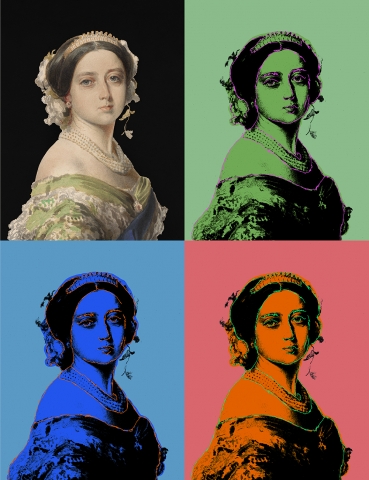
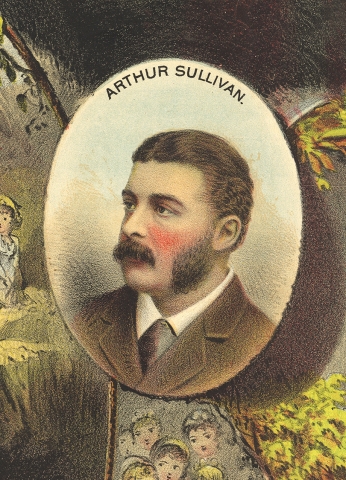
 The Chicago Dzviti Photograph Collection was acquired by the University of Rochester’s Department of Rare Books, Special Collections, and Preservation in 2017. Born in rural Zimbabwe, photojournalist Chicago Dzviti (1961-1995) captured a wide range of Zimbabwean life during the early 1990s, an era in which ambitious social programs were increasingly abandoned in favor of economic structural adjustment. In the context of these social changes, Dzviti’s photographs pay close attention to issues of production and labor, documenting activities such as peasant agriculture, artisan crafts, domestic work, commercial agriculture, and urban labor movements.
The Chicago Dzviti Photograph Collection was acquired by the University of Rochester’s Department of Rare Books, Special Collections, and Preservation in 2017. Born in rural Zimbabwe, photojournalist Chicago Dzviti (1961-1995) captured a wide range of Zimbabwean life during the early 1990s, an era in which ambitious social programs were increasingly abandoned in favor of economic structural adjustment. In the context of these social changes, Dzviti’s photographs pay close attention to issues of production and labor, documenting activities such as peasant agriculture, artisan crafts, domestic work, commercial agriculture, and urban labor movements.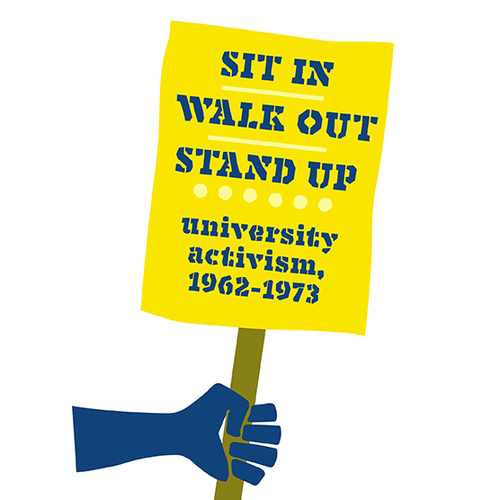
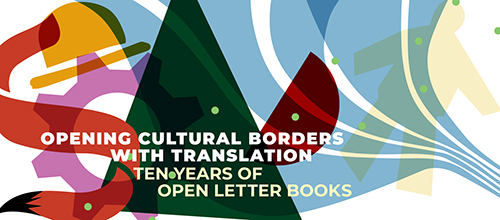
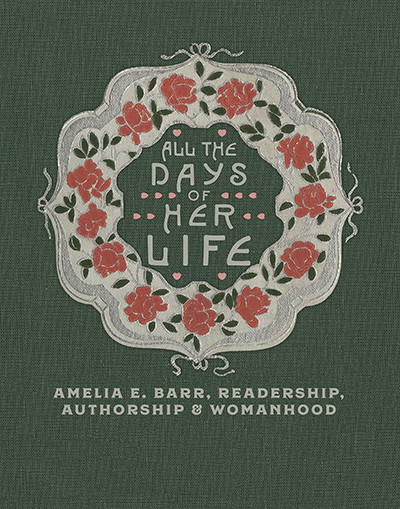
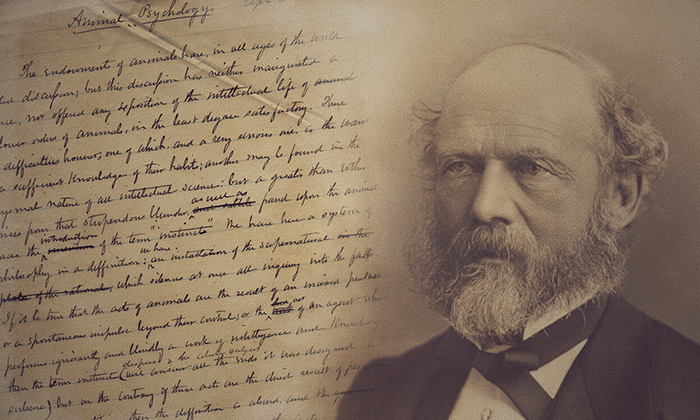
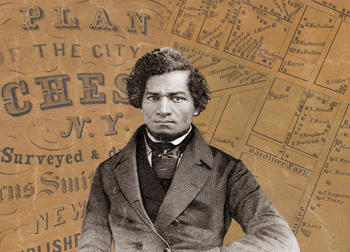
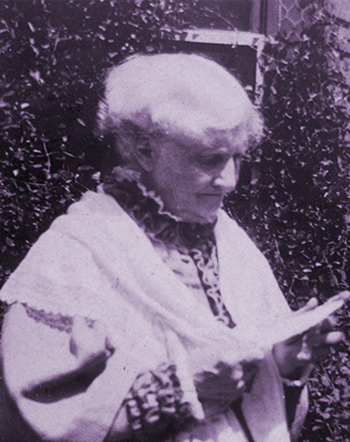


































![L-R: YWCA of Rochester and Monroe County Collection. ca. 1910.; William Channing Gannett. The House Beautiful; in a setting designed by Frank Lloyd Wright. 1898.; John C. Gardner. “Julius Caesar and the Werewolf.” [1982]; American Tobacco Company. [University of Rochester] College Flag, Seal, Song and Yell. Tobacco silk, 1910.](http://www.lib.rochester.edu/IN/RBSCP/IMAGES/NEWSIMAGES/AM_Front_Web_lg.jpg)














































































